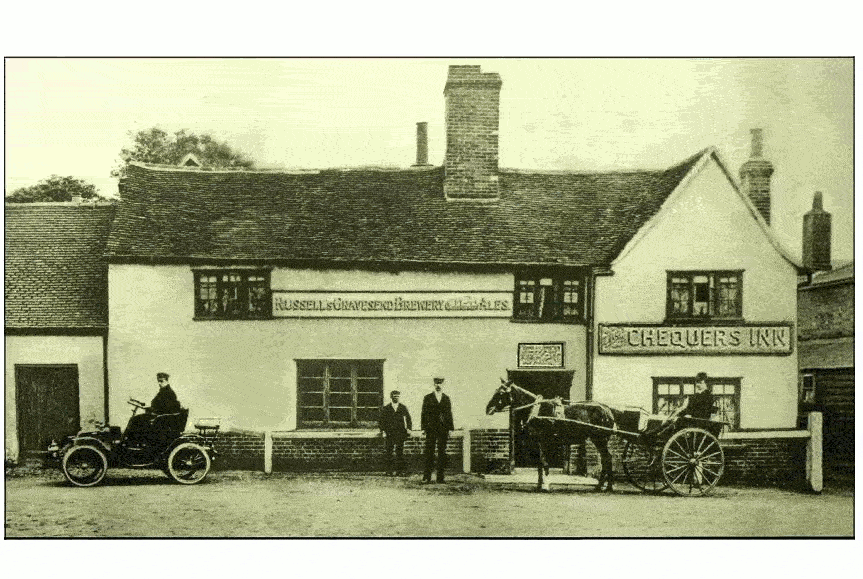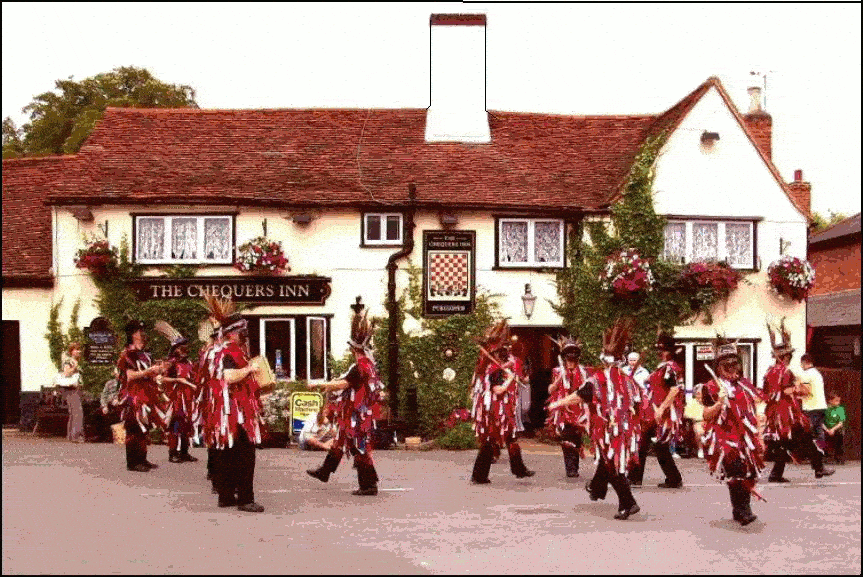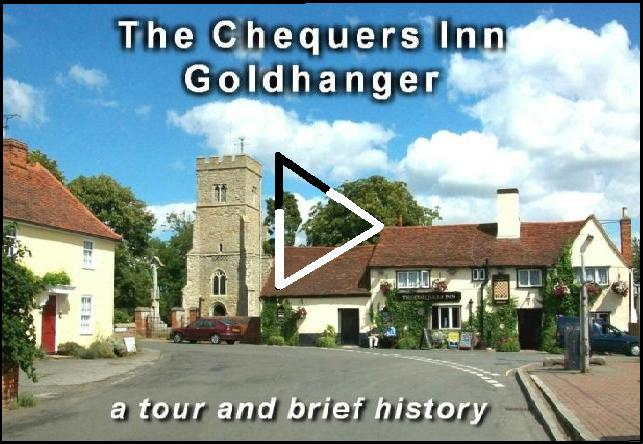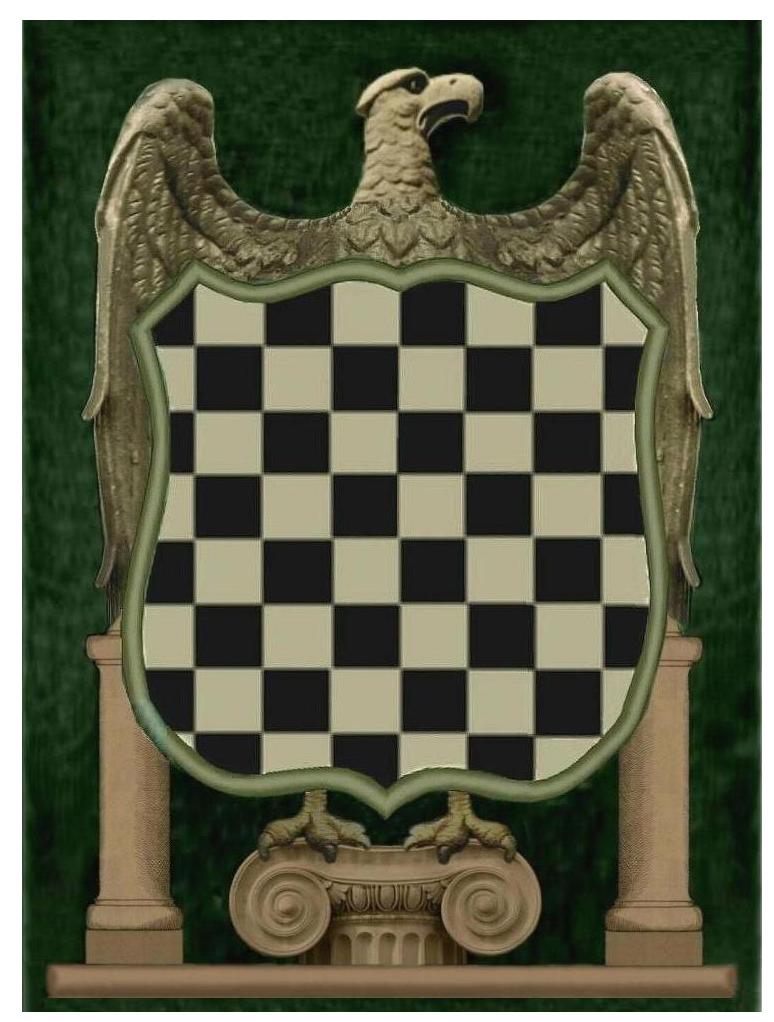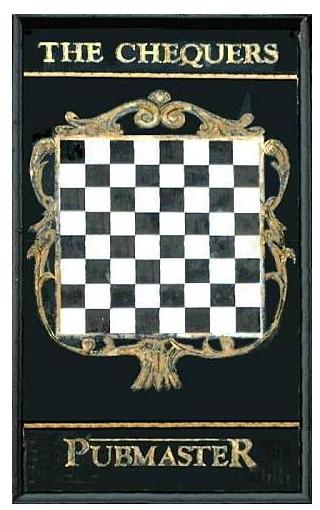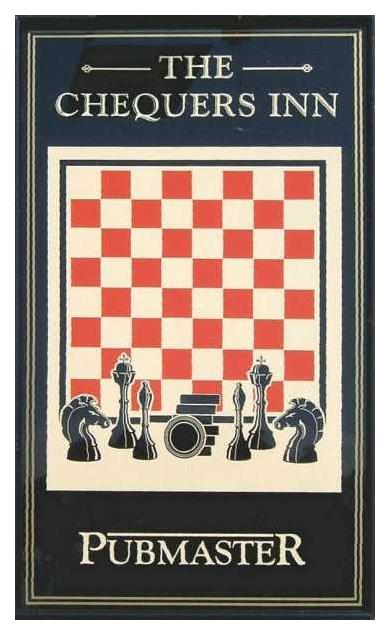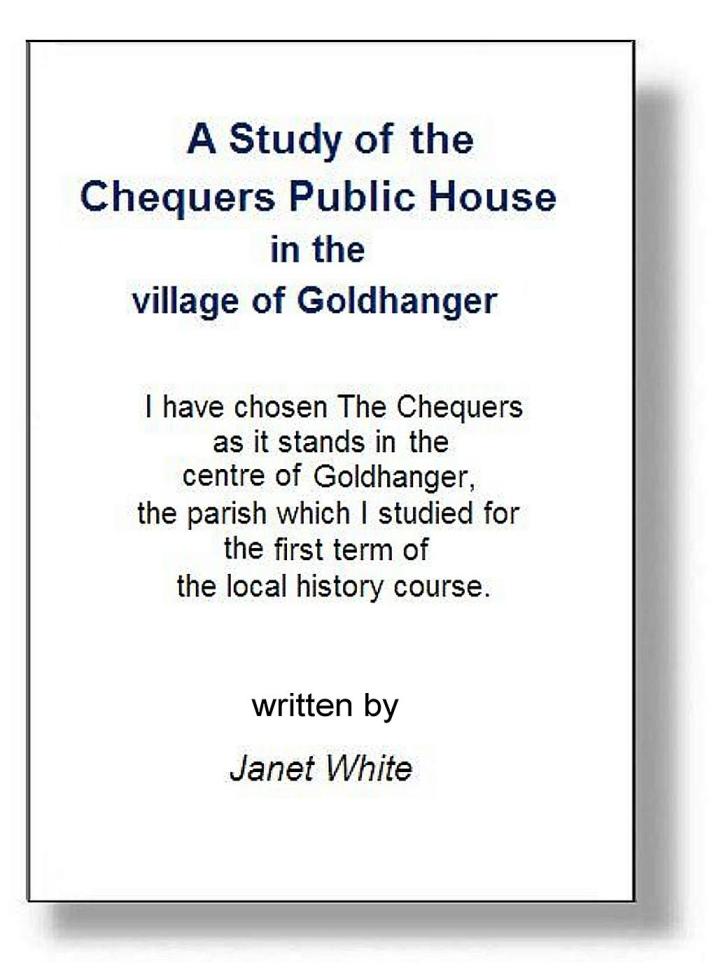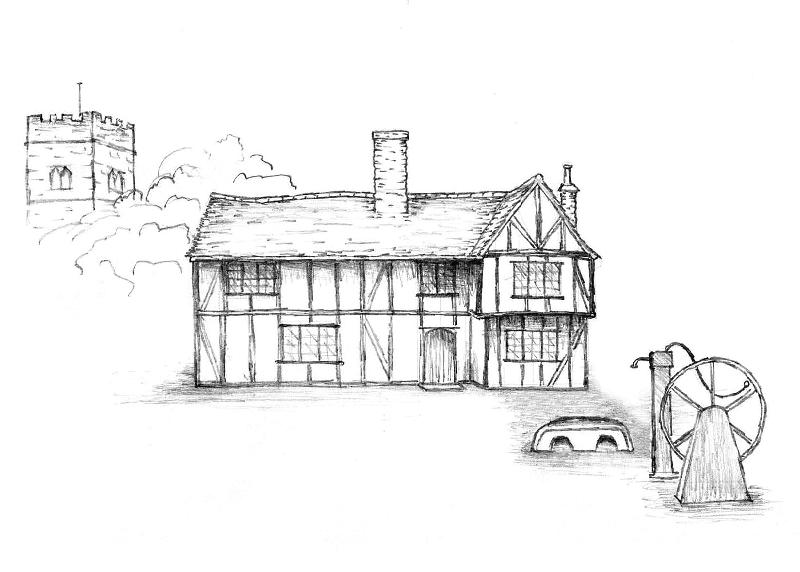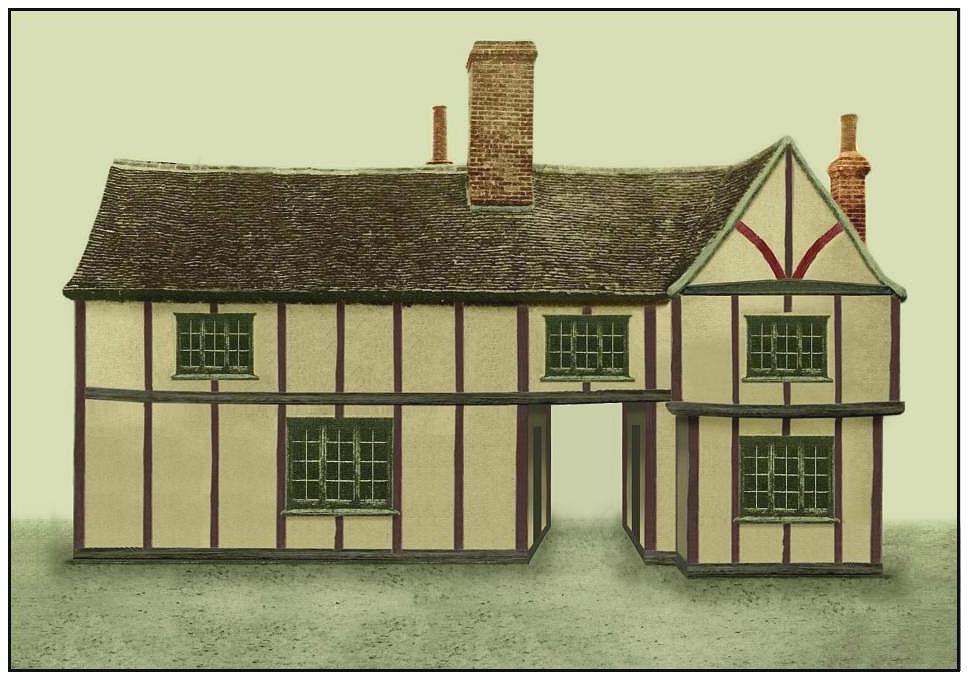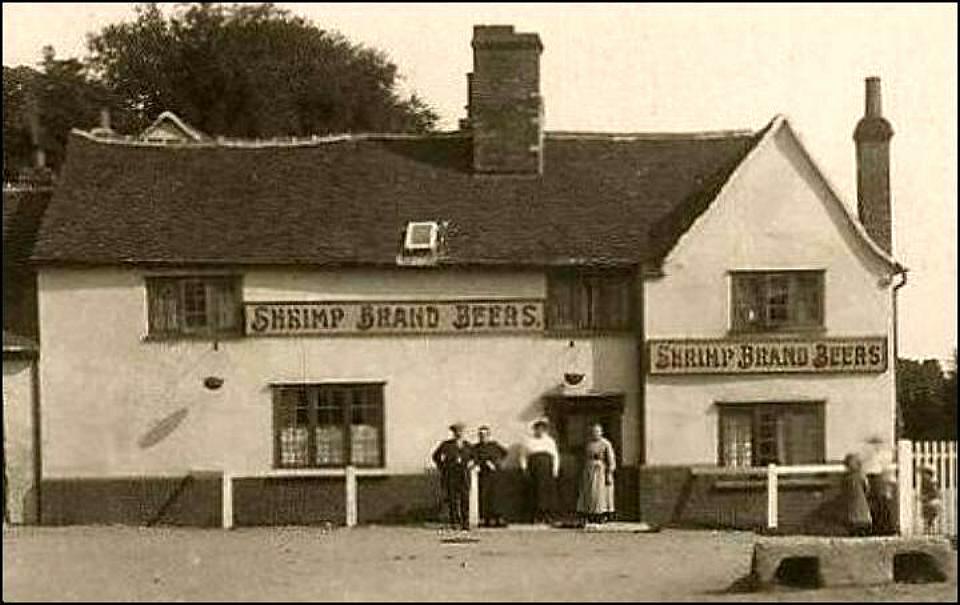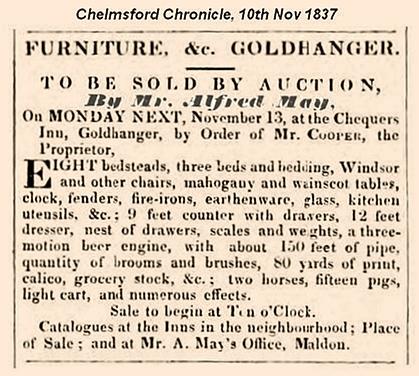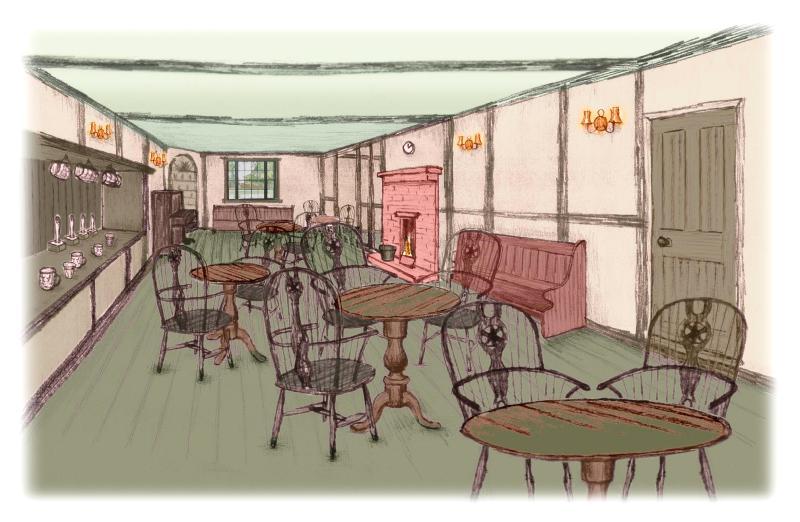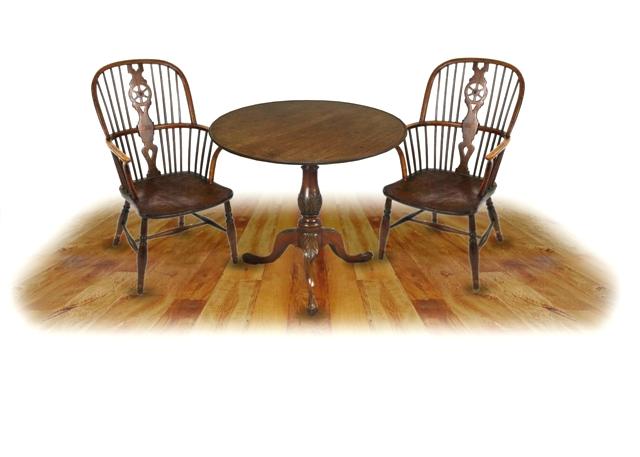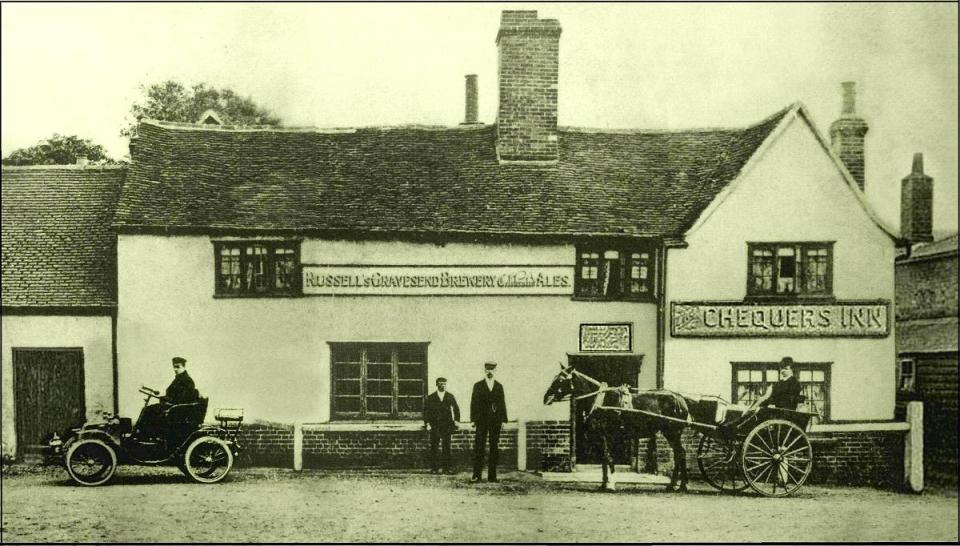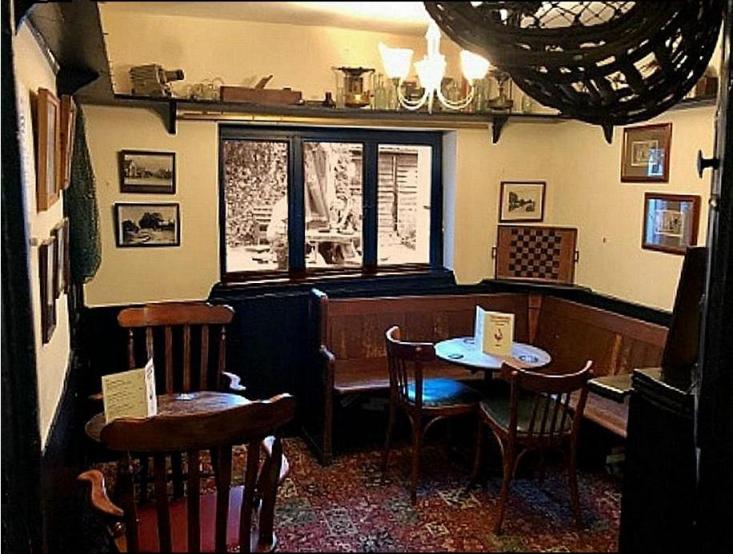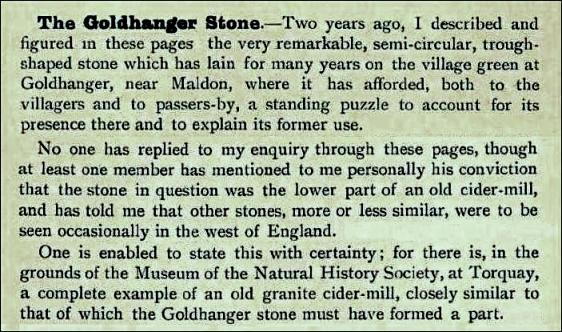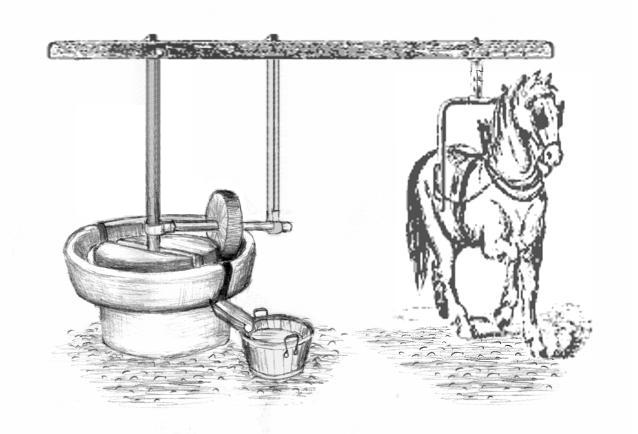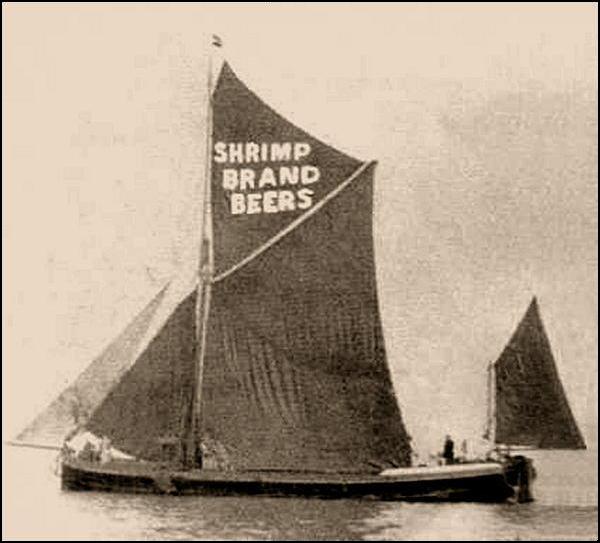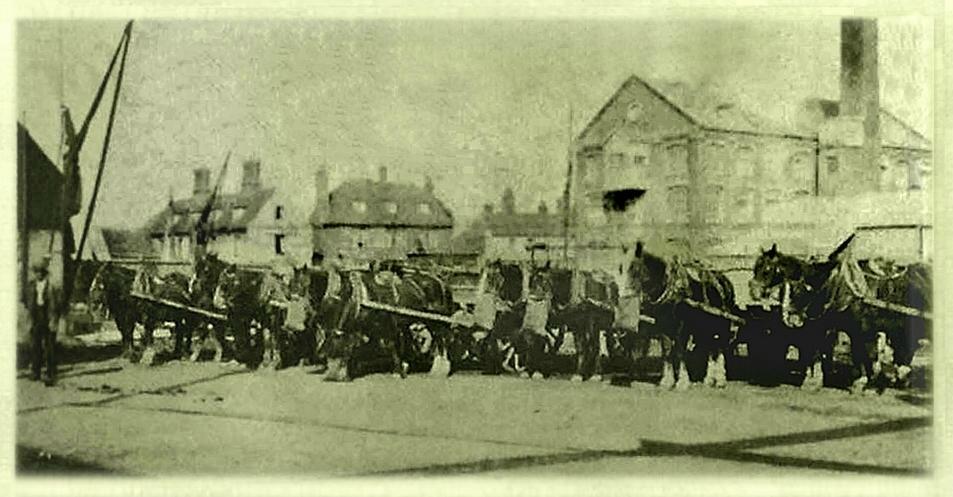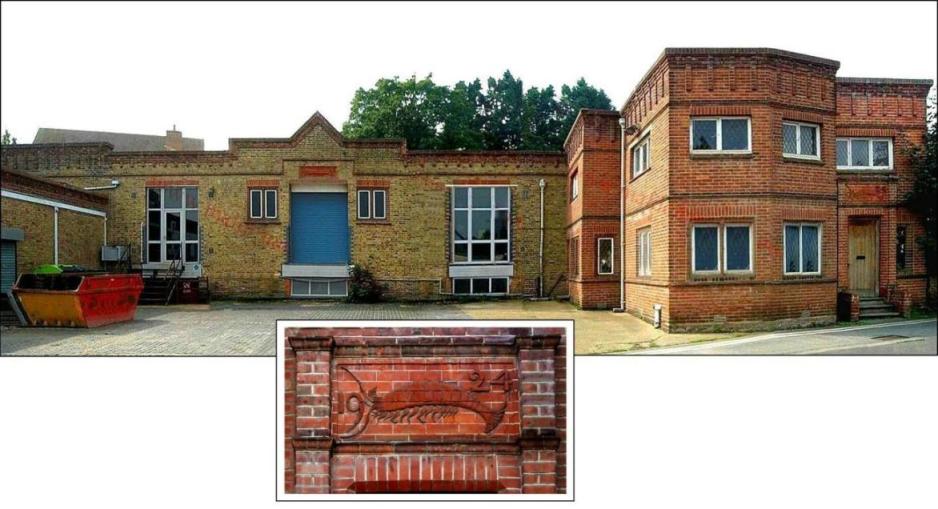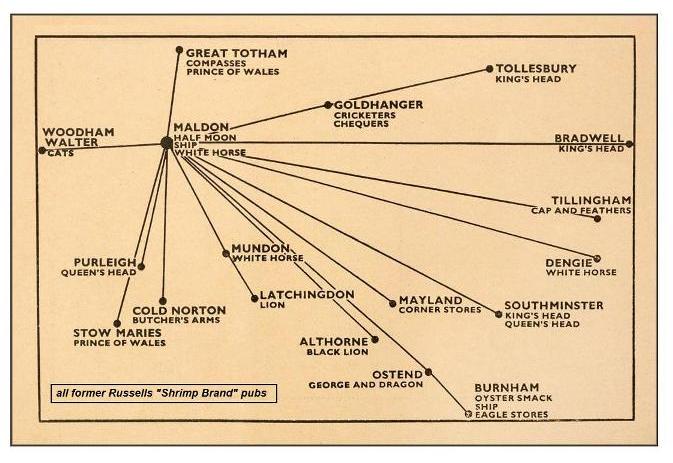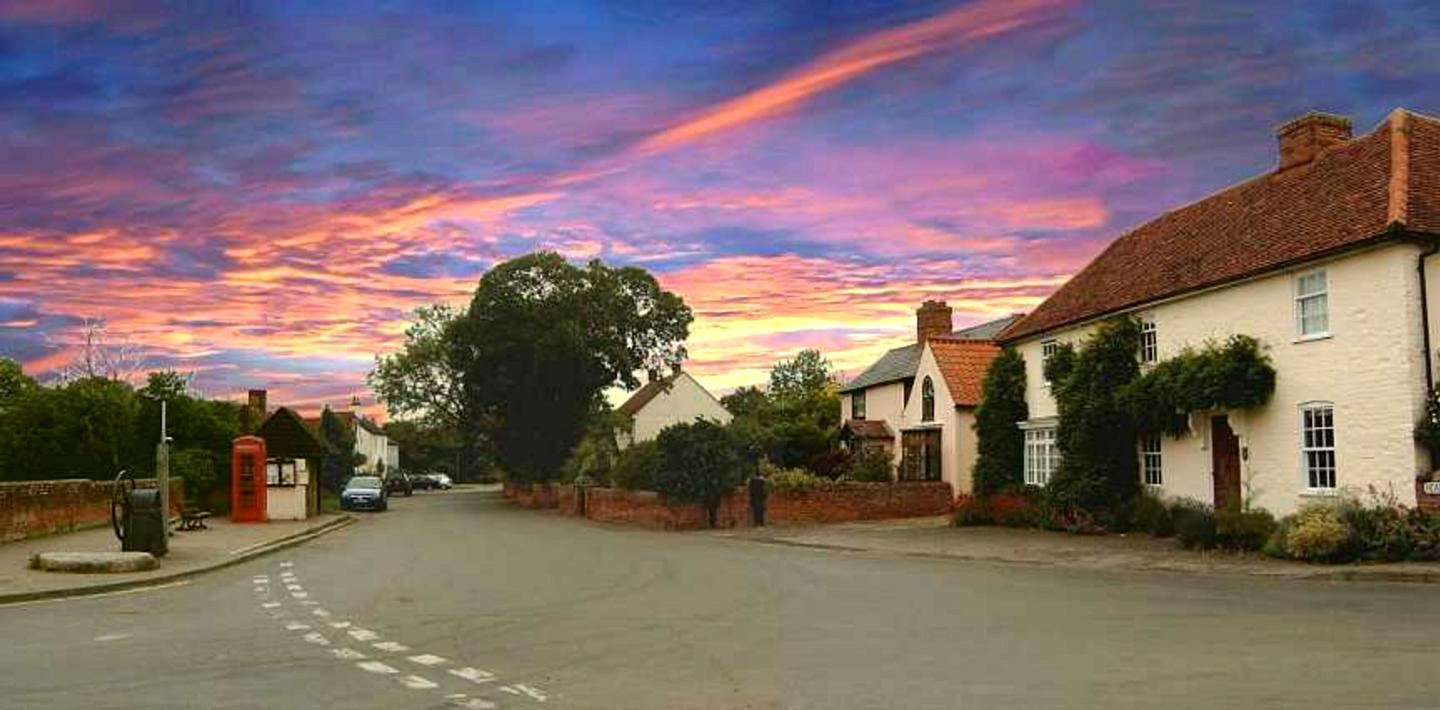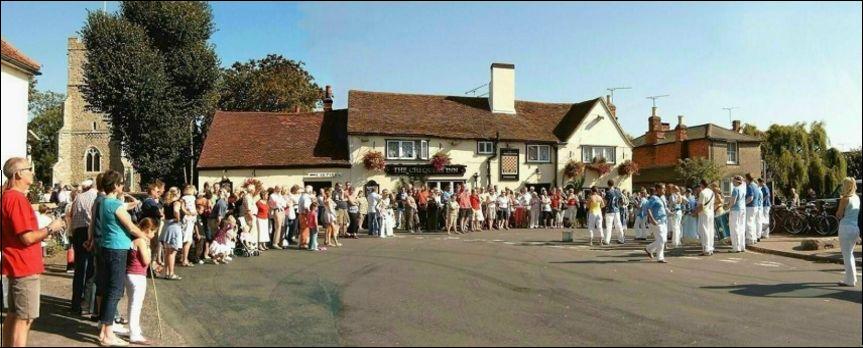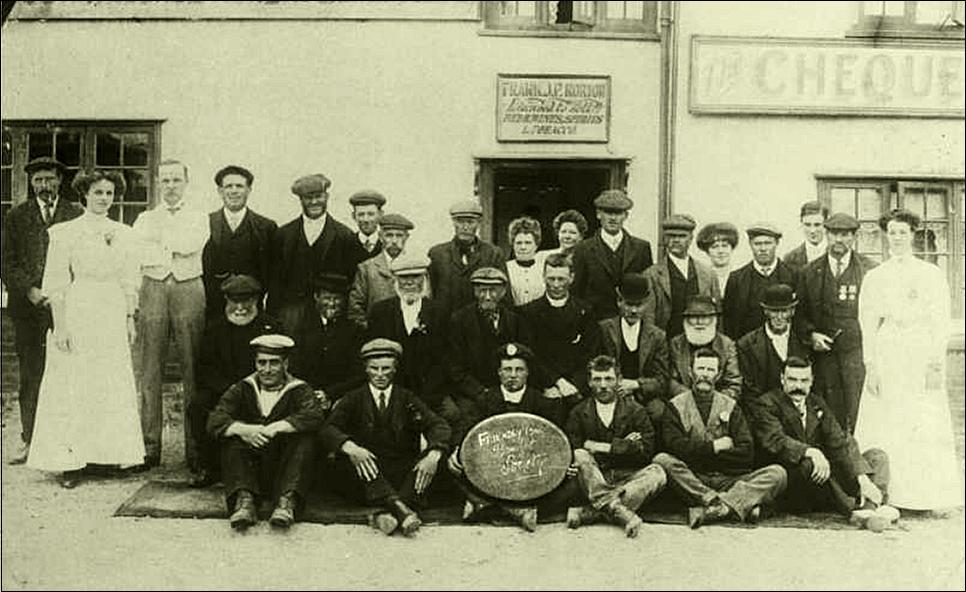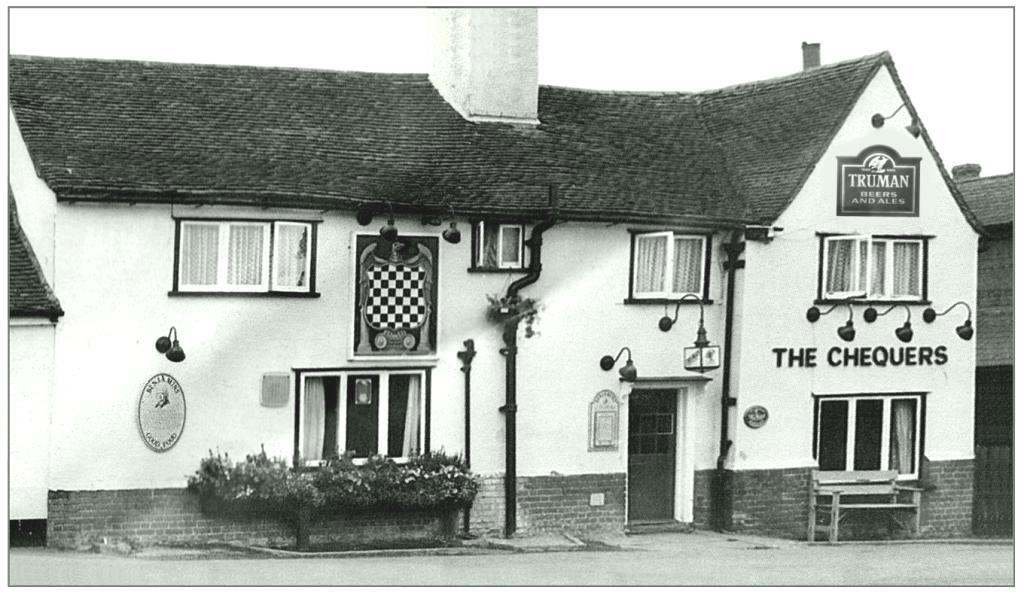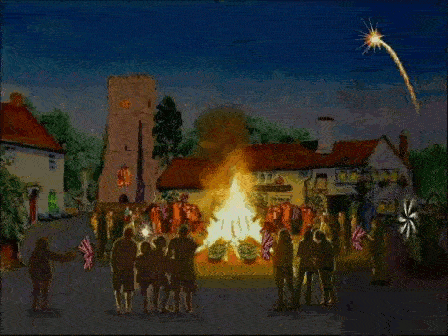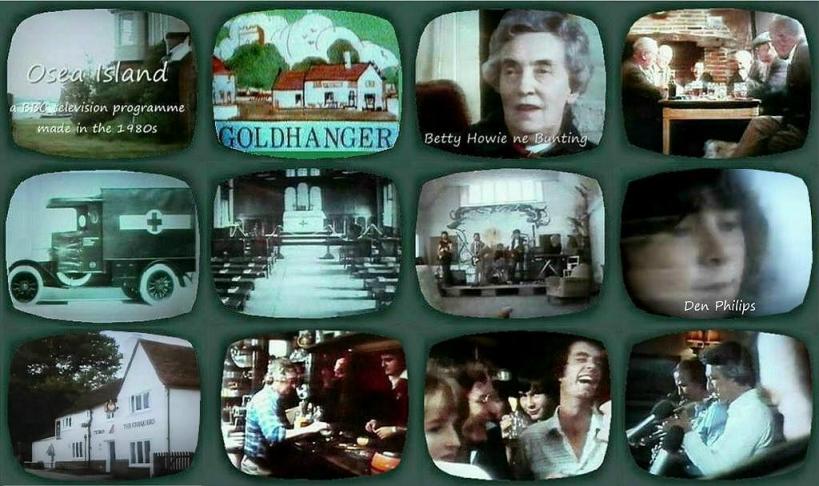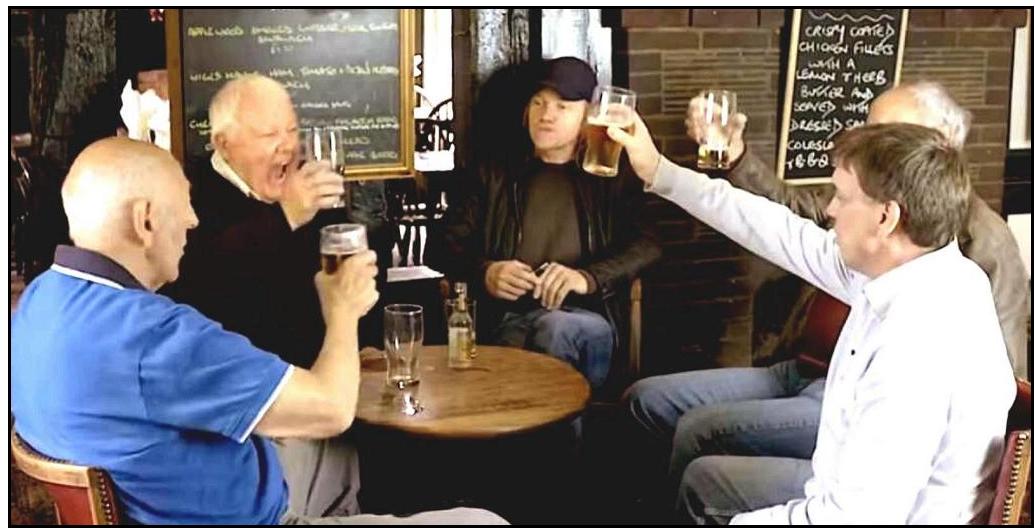THE CHEQUERS INN
GOLDHANGER
yesterday and... today
Contents
|
|
o The Chequers as a coaching inn o The
beer - and "Shrimp Brand" |
o Bellringing and the Chequers o article from "Pub Walks in Essex" o Short Walks from The Chequers |
|||
|
|
|
||||
|
A
video tour and brief history of The Chequers the building, the public rooms famous visitors, past landlords TV and film appearances, etc. available at... www.youtube.com/Q-SfqWAA6a8 |
|
HERITAGE LISTINGS
The Chequers Inn has three heritage listings:
1.
Grade II listed British/English
Heritage building of special architectural and historic interest.
See... Goldhanger Past – Listed
buildings#Chequers and britishlistedbuildings.co.uk/101111096-the-chequers-goldhanger
2. Maldon District Council listed “Assets of
Community Value”. Part of the Localism Act of 2011 that enables
communities and the Parish Council to request that an asset be protected
against the sale and use of the building for other purposes.
See...
http://www.maldon.gov.uk/download/downloads/id/8001/assets_of_community_value_register.pdf
3. Listed in CAMRA’s “Historic
Pub Interiors of Regional Importance”. “A definitive guide to the nation's
most important historic unspoilt pub interiors, compiled by CAMRA's Pub
Heritage Group”
See...
https://pubheritage.camra.org.uk/pubs/1089
RECENT PUB SIGNS
ORIGINS OF THE NAME
There are several possible origins of
the Chequers name. The Romans are said to have brought the name and the
chequered sign into this country to signify an inn or ale house. They in turn
were believed to have adopted it from the Egyptians. The sign has been found on
houses excavated in Pompeii. It is said to have indicated that games such
draughts were played on the premises. Chequers is the old English name for
draughts and it is still called that in North America.

There is a chequered pattern on the front
of the Church tower, an indication of a long-standing relationship with the
Church next door, possibly back to the days of the friars. There is also a
chequers tree that was grown for its berries and used for beer making before
hops were introduced. Its other name is the Service tree but because it
develops a chequered pattern on its bark it is better known as the chequers
tree.
 Equally, it has
been said that the name came about due to another relationship with the
neighbouring church and the collection of tithes or taxes. As early as 1600,
the tax collector would use a board of black and white squares to assist in
tallying up the tithe monies brought to him by the people of the village whose
property was owned by the church. As each person made their payment, the tax
collector would place their coins on a square. Once every square had been
filled, the task was complete. Those who couldn`t pay in cash took produce to
the tithe barn which, until the 1970s, was located on the north side of the
churchyard. The sign also indicated that the building provided banking services
and has the same Latin origins of the word "exchequer".
Equally, it has
been said that the name came about due to another relationship with the
neighbouring church and the collection of tithes or taxes. As early as 1600,
the tax collector would use a board of black and white squares to assist in
tallying up the tithe monies brought to him by the people of the village whose
property was owned by the church. As each person made their payment, the tax
collector would place their coins on a square. Once every square had been
filled, the task was complete. Those who couldn`t pay in cash took produce to
the tithe barn which, until the 1970s, was located on the north side of the
churchyard. The sign also indicated that the building provided banking services
and has the same Latin origins of the word "exchequer".

It has also been suggested that the
chequered motif originates from a link with one of the Goldhanger Lords of the
Manor. All Lords of the Manor had a manorial coat-of-arms and one family, the
Heveninghams who held the position at Goldhanger in the late 14th
& 15th century, had a chequered motif in their heraldic shield. This is their
Coat-of-arms...
Finally, whatever the origins of the
sign, the chequered motif fulfils the prime objective of a pub sign in that is
has to be easily recognisable without using the written word. In the past many
customers would not have been able to read. It must also be visible from a
distance and at night without artificial lighting to guide travellers towards
the inn.
HISTORY OF THE BUILDING
The
Chequers has been an alehouse, and later an inn and public house, for around
250 years. The house was however built about 500 years ago, probably by a
yeoman or small landowner as his private residence. It is in a prominent
position in the village next to St Peters church,
which is much older, and is on the east side of The Square. It is said to have
been used as a court house when first built.
Here
is an extract from “Pub Walks in Essex”,
by Norman Skinner in 1980...
“The
Chequers Inn started life in 1410 as a court house wherein the unfortunates of
the time were tried, executed in The Square and buried in the adjacent
churchyard. Being in the proximity of Blackwater the odds are that a fair share
of smugglers travelled this short but eventful journey”.
There
is very little other documentary evidence of the building`s origin, however by
studying the design and construction of the building today much about how it
and when it was built can be determined. The only known historical building
analysis of the Chequers and its architecture was undertaken by Janet White in
the late 1980s or early 1990s. A copy of her report is in our archives and
available here in two forms, and is a recommended read:-
|
the original hand written manuscript is here... (12-pages) |
machine readable text version is here... (with a Glossary of terms) |
Like
most buildings of its age, it has been altered and extended many times in its
life and some evidence of the past and the changes were lost in the process.
There may have been a building on the site before, but the present one started
life around 1500 during the Tudor dynasty. It was a time of great changes
between the medieval period and the Renaissance and this is reflected in the
building.
A
typical Medieval Hall House had a central full height hall with a two storey
wing at one end and rooms or a wing at the other for the owner and his family.
Looking at the timber framed Chequers from the street we see evidence of this
arrangement with the gable of the service or store wing on the right and hall
next to it. There is no clear evidence of a private wing to the left of the
hall. Originally the oak and elm frame would have been exposed but as fashions
changed and to give protection from the weather the timbers were covered with
plaster, hiding the original wattle and daub infill.
The main door from the street is in its original position and leads to
the cross passage with the door opposite, just after the entrance to the bars,
in the back door position at the rear of the original building. The front wall
of the wing on the right would have stuck out with a jetty at first floor level
and with the ground floor wall flush with the doorway. As you enter the cross
passage the first room on the right, with the Bar Billiards table, was the
Buttery, or store for drinks especially ale. More recently this room was the
Landlords parlour. The next door is to the Pantry where perishable food was
kept. From this room there would have been a steep flight of stairs or a ladder
to a large store room above. The roof above this upper room has a Crown Post
construction.
This type of roof is known from the 13th century, but was especially popular
from the 14th century for domestic building in the south east of England.
Crown-post roofs disappeared when open hall houses became redundant in about
the 1550s. The roof space also has "wattle and daub" partitions...
a view of the roof space taken from the 1990s
report
Turning left from the cross passage we enter the "hall", which
has changed enormously. As we walk a couple of paces through the doorway there
are remnants of the rear wall of the Tudor hall on the right. Like many similar
houses, it is likely that the hall would have been open to the roof and that
the fireplace, chimney and upper floor were added later. Traditionally medieval
halls had an open fire in the middle and the roof timbers, exposed to the
smoke, would have been blackened.
Originally the timbers in external walls
would have been in-filled with "wattle and daub"
leaving most of the external timbers exposed. There is a mixture of oak and elm
in the building and the elm would not have survived 600 years of external
exposure. This together
with the jetted first floor and the period windows would have given the building
very different appearance as shown in this sketch and digital drawing produced
using information in Janet White’s 1990s report...
two
artists impression of the original building with exposed beams, the jettied
first floor and period windows
Early photos
taken in The Square show wooden glazing bars on the front windows, this would
be in keeping with the other local large houses, such as the Old Rectory, Hall
Farm and the Mill House.
The present roof has no soot blacked timbers. So, the implication is
that somewhere between 75 and 125 years after the original house was built the
owners decided to "modernise" it. The original bricks of the
fireplace in the present front bar probably date from around the late 1500`s to
the early 1600`s, and the original mantel beam can be seen. The "modern
invention" of a chimney made living in a house less smoky and less likely
to burn down. At the same time the outside walls were heightened, upper rooms
added and the roof renewed with a shallower pitch. In the 1700`s a large
extension, now the rear bar, was added.
Early photographs of the building taken from The Square show a very noticeable sag in the main roof, which is not present today, indicating that in the last 100 years the roof has been renovated and the beams repositioned.
The timbers and workmanship of the building are not first quality but
there are small features, typical of the times, that show that the carpenters cared about their workmanship. For example, the main beam of the ceiling of
the front bar is chamfered and finished with rough lambs tongue stops. On the
other hand, some materials are defiantly substandard; some of the
"daub", on the wattle in the filling between the timbers, appears to
have come from the clayey mud of Goldhanger Creek instead of the traditional
lime and hair (or straw) plaster.
The out
buildings at the rear of the building, now the kitchens, were built as stables
with cobbled floors and a hay-loft above. There is no sign of a well at the
rear of the property, which would have been typical for such a building. The
close proximity of the well and pump in The Square opposite, which was known to
produce high quality water, probably meant that a private well was not needed.
This meant all water had to be hand carried from The Square, probably using two
pails and a yoke, but other villagers had to carry it much further (mains water
didn`t appear in the village until 1937).
Today the
Chequers Inn is listed in the CAMRA “Historic Pub Interiors of Regional
Importance”. Their home page
explains:
“Here is your definitive guide to the nation's most
important historic unspoilt pub interiors. The list has been compiled by
CAMRA's Pub Heritage Group and is the product of over thirty years of careful
research.”
This pub in one
of 25 listed in Essex, with just 5 within the Maldon district
The Chequers
entry is at... https://pubheritage.camra.org.uk/pubs/1089
...and the CAMRA
description does not even mention the two impressive ancient corner cabinets...
The fitted
corner display cabinet in the main bar is clearly extremely old. This type of
fitment was known to be used as a shrine and an occasional altar after the Reformation in 1547 with the cross and other
religious items stored in the hidden cavity below when not in use. Whether this
particular cabinet was used in this way is not documented or certain, but the
reformation did result all "monuments of
feigned miracles" being stripped from St. Peter`s next
door and sold locally. See page-3 of... Ancient Documents 1549 - Church Goods, an inventory of the contents of St Peters Church.
The other
cabinet is in the “parlour room” just off the entrance hall to the right and is
almost hidden by the bar billiards table. The cupboard can be dated by the four
distinctive wrought iron hinges, and now contains the electricity meters and
switches!
corner display cabinet Corner cupboard in the parlour
in the main bar now the games room
Here
is an advert from the local newspaper of 1837 selling off the inn's furniture
and other effects...
Although this 1837 advert refers to
selling Windsor chairs, the chairs were still there in the 1960s...
an artist`s impression of the
Windsor chairs in the bar in the 1960s
The long bar in the main room was once much shorter,
being just a few feet in length close to the door. It was fitted with a pair of
wooden shutters that were kept closed in quiet periods in the winter, so that
the main bar could be shut off from the remainder of the building and left
unheated. In the 1960s there were an impressive collection of high
Windsor-backed arm chairs in the main bar, which gave a dignified appearance to
the room. The bench seats came from the Goldhanger Wesleyan Chapel.
the main bar
the tap room
This picture that has been hanging in
the tap room for many years has a particular significance...
...it is a 1906 photograph that shows Frank Wellington in a 1903 Voiturette with William
Page of Follyfaunts in a horse and trap. As far as is known Frank Wellington
never lived at Goldhanger, however he was related to several members the Page
family who were Goldhanger farmers, but was a well known automotive engineer,
vehicle manufacturer, dealer and motor racing enthusiast.
The Snug
The snug room – the name originated in pubs, being
the place where people such as priests and policemen could drink somewhere in
private. This could well have been the case in the Chequers Snug room, being so
close to a church and also we know that the building was used as a court house
in the past, with inquests being held there as recently as the early 1890s, so
this very small side room would have been very useful for the “officials”.
THE CHEQUERS AS A COACHING INN
In the days of horse drawn coaches and wagons the
section of the Maldon Road, that today bypasses the centre of the village,
probably did not exist. See... Local highways and byways
from the past and East-west routes –
Maldon Rd. The absence of an inn and other old buildings along that stretch
of road supports this. Traffic between Tollesbury, Mersea and Maldon would have
come into the village to water the horses at the ponds and village pump, and so
that passengers and drivers could use the facilities of the inn.
The Chequers had stables in the back yard, so stage
coaches on longer journeys may well have changed horses. There was also a
wheelwrights just across The Square to repair or replace any wheels damaged on
the poorly maintained gravel roads between the villages.
It would have been important for the landlord and
staff to anticipate travellers arriving in The Square and the window in the
back bar, that today looks into the churchyard, could once have had a clear
view up Church Street. The red brick walls now around the churchyard were built
in the 1850s and prior to that it is believed that Church Street was wider with
trees set back nearer the Church. There are also signs of a previous north
facing window in what is now the store room which would also have had a good
view up Church Street.
THE STONE IN THE SQUARE

The stone in the Square in
1906, before being set in the paving
The
large half-round stone set in the pavement in The Square opposite The Chequers
has its own peculiar history and link with the inn. Although it is generally
assumed to be a corn millstone, but it almost certainly wasn`t. It has no hole
in the centre and millstones are usually complete solid circles. It also has a
large groove or trough on the underside, which is not typical of a millstone. The
unique white flakes visible on the surface, have identified the stone as hard
granite unique to Haytor quarry, Dartmoor, Devon, so it must have come by sea
to Essex. The other half was once said to be nearby in the village as a door
step, although broken. Historian Miller Christy
wrote about the Goldhanger stone in 1909 & 1911...
|
|
Mystery still surrounds why it came to be in
Goldhanger, the most likely explanation being that it was part of a cider press
and it would probably have been powered by a horse. We do know however, why it
is in its present location - it was placed there to assist the Chequers guests
to mount their horses on their way home. It is also said to have been used in
the past as a scrubbing stone when washing clothes adjacent to the well. Before
the days of a pavement the stone was free-standing and hence significantly
higher as shown in the 1906 photo, but children became adept at crawling around
the curved "tunnel" as a challenge
and the stone was filled with concrete to block it off for their safety.
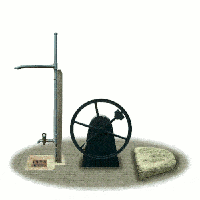
if the pump and stone look
like they are rotating when you leave the pub
please dont get on your horse
or drive home!
THE BEER and SHRIMP BRAND
Originally both beer and cider would have been made
in the village. Conveniently, there was a windmill and malsters just two doors away
in Fish Street and a second malsters further down the street. Goldhanger was
also well known for apple orchards. As recently the 1970s orchards were all
around the village, including the fields just behind the inn where D`arcy
Spices and Coxes Orange Pippins were grown by farmer Charles
Page. Today just one commercial orchard remains in the village.
In the days when fishermen sought entertainment in
the village, there was said to have been five alehouses in the village, some
licensed some not. Locations for the others included: Bird in Hand, Dolphin
Cottage in Fish St., and No 2 Fish St., which more recently was the bakery.
In the past The Chequers has been owned
by various breweries and the many postcard
scenes of The Square over the last 100 years show a variety of brewer`s
names on the building. Two of those were “Shrimp Brand
Beers” and “Russells Gravesend brewery”. In fact Shrimp
Brand was a trade name of the same Gravesend based brewery in Kent. That
brewery took over the Writtle Brewery Co and its 90 Essex based pubs in 1900.
The Writtle Brewery Co had been supplying the Maldon area since the 1870s, so
would have also supplied The Chequers at that time.
the sign was across the front of the pub in the
early 1900s...
a close up of the sign reveals “Russells Gravesend
brewery Celebrated Ales”...
by the mid1920s the sign had changed to Shrimp Brand
Beers...
Russell’s Shrimp Brand beer was
delivered by sea and the rivers on sailing barges. These Thames barges, still
based in Maldon and occasionally visiting Goldhanger Creek, were sailed by just
two men, so was a very economic form of transport, and they could sail with
equal ease in rivers, creeks and coastal waters. The Maldon timber merchants
Sadds, owned four barges which they used to transport timber all around the
south coast...
Barges bearing the Shrimp Brand mark brought regular
shipments of beer and other ingredients from Gravesend to a purpose-built
Russells depot at the Fullbridge wharf. The beer was then delivered around
Essex by horse drawn drays and later by petrol driven trucks with Shrimp Brand
over the cab. The two man crew were given an allowance of beer for each trip to
deter them from interfering with the cargo!
This early 1900s photograph shows at least ten drays
lined up outside the Fullbridge depot ready to make the day's deliveries and
gives a good indication of the scale of the business at that time.
This impressive art deco style building at
Fullbridge wharf was built in 1924 as indicated in the red brick trade mark
inscribed over the main entrance, but the building was sadly burnt down and
destroyed in 2011 while being used as a chemical warehouse. The photos above
were taken shortly before that fire.
Russells Gravesend brewery operated from 1858 to 1932 before being taken
over in that year by Trumans, at which time it owned over 200 pubs in Kent and
the those in Essex previously owned the Writtle Brewery Co, including those
along the north bank of the Thames and these locally...
|
The Chequers Goldhanger |
The
Compasses Great Totham |
The Kings
Head Tollesbury |
|
The White
lion Market Hill, Maldon |
The Jolly
Sailor Hythe Quay, Maldon |
The Half
Moon Heybridge |
and here is a map from the early 1930s
just after the Trumans takeover which shows
all the Russells/Shrimp Brand pubs they had
just acquired in the Maldon District...
A LETTER TO THE MP DURING WW-1
Below is a letter written by Arthur Appleton of Church Street, to the local MP of
the day in May 1918 during WW-1
at a time when The Chequers was a Shrimp
Brand owned pub.
Authur
was a farm worker and a Special Constable...
|
Dear Sir, I write you on behalf of our branch of the
Workers Union which numbers 70 members to ask if you will kindly use your
influence to get us an extra allowance of beer allocated to the Chequers Inn
Goldhanger which we use as a mess house. We are all asked to work extra hard these times
upon the land with longer hours and feel that we obtain benefit from our pint
of beer when taken with our food. It is not a case of asking for facilities
for excessive drinking, but simply asking for a drink of beer to help out our
reduced diet of meat and bread. We do not ask for any increase of brewing as
many houses in towns such as Witham and Maldon have many of their customers
left to join up the army or will be leaving very soon for that purpose.
Consequently the houses have really more beer than is necessary. Here there
are more men coming upon the land such as disabled and or unfit soldiers. The
beer that goes to those house in towns where so many of the men are being
called up might be diverted to our industry, especially during the coming hot
months. We are doing our best by working hard to grow
more food stuffs and feel completely done up, as it were, when for about 3
days each week we are not able to obtain what we have always been used to,
the house being closed during that period having only one barrel per week
allocated to it under the present system. I am faithfully yours,
Page-9 |
(The original letter is in the Essex Records Office)
IMAGINE THE SCENE
Although the building hasn`t changed a
great deal, a visit to the Chequers two hundred years ago would have been very
different experience from today. Approaching the building from across The
Square it would have appeared as a very grey place by today`s standards, a
sense of dereliction; with cracked and flaking walls; no cream and white
paintwork; no written signs; no hanging baskets of flowers; just the chequered
board to indicate that this was an inn. At night there would be a candle in the
window and an oil lamp by the front door to light the way (electricity did not
arrive until 1937).
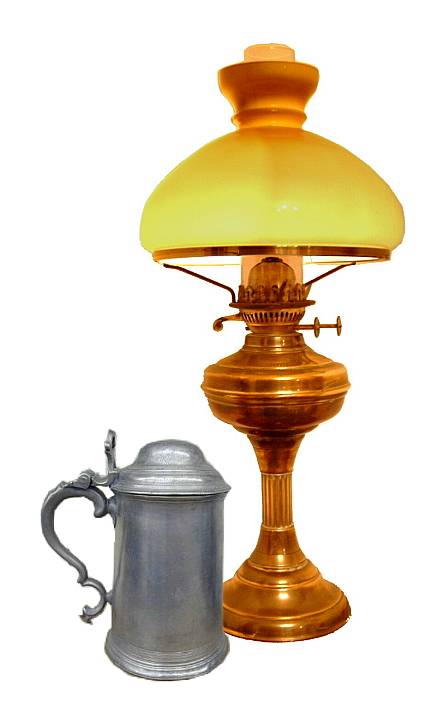 Initially, the
inside would also have appeared very dark, an oil lamp on the bar, with most
light coming from the flicker of large wood fires that reflected on the copper
and pewter ornaments and utensils adorning the walls. The once lime washed
internal walls brown from the smoke. No curtains, cushions, or carpets covering
the flag-stone and tiled floors, but the bar would have seemed warm and
welcoming.
Initially, the
inside would also have appeared very dark, an oil lamp on the bar, with most
light coming from the flicker of large wood fires that reflected on the copper
and pewter ornaments and utensils adorning the walls. The once lime washed
internal walls brown from the smoke. No curtains, cushions, or carpets covering
the flag-stone and tiled floors, but the bar would have seemed warm and
welcoming.
Beer
and cider was served in glazed earthenware or pewter tankards, at room
temperature straight from the barrel (no cellar then or now), with the choice
limited to "old beer" (dark, with
floating hop pieces), light, or best. Talk at the bar was the opportunity to
hear of events in Maldon and London, and of wars happening in far away places.
Only the wealthy read The Times. Late in the evening cards, dominos or draughts
on the chequered board would be played in the tap room. On a Saturday evening
there might be a song accompanied by a banjo or accordion.
For
a meal there was also little choice: soup, bread & cheese, or for the "upper-crust"
customers the roast meat of the day, served with the upper crust of the loaf,
perhaps with some boiled root vegetables, all delivered on a large pewter plate
and eaten with just a knife and the fingers. For afters: an apple; more beer.
At
closing time the villagers would walk home by moonlight (no change there). The
farmer from the edge of the village would unhitch his horse from one of the
hitching rails near the front door and mount using the stone opposite in The
Square for much needed assistance. The horse would find its own way home.
THE SQUARE IN TIMES PAST
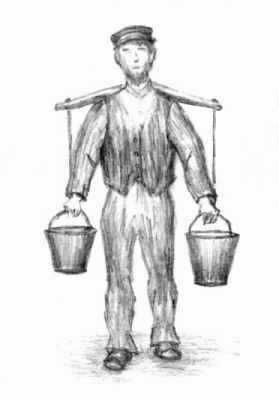 Today the Chequers
is the only business in The Square. Before the motor car arrived however, the
village was relatively isolated and much more self-sufficient. Then, properties
around The Square were thriving businesses,
supplying the everyday needs of villagers. For hundreds of years the well and
pump in The Square provided the main source of fresh water and the daily trek
to The Square would have been combined with a visit to the shops and the inn.
Today the Chequers
is the only business in The Square. Before the motor car arrived however, the
village was relatively isolated and much more self-sufficient. Then, properties
around The Square were thriving businesses,
supplying the everyday needs of villagers. For hundreds of years the well and
pump in The Square provided the main source of fresh water and the daily trek
to The Square would have been combined with a visit to the shops and the inn.
There
was a general store and post office; a wheelwrights and cycle shop which sold
paraffin, and later, petrol in re-usable tin cans; a clockmaker;
a blacksmiths; a carpenters shop with a sawpit; and a bakers. A few yards along
Head St. There was a butchers with a slaughterhouse in the backyard. There
would have been fresh fish for sale outside fishermen`s cottages down Fish
Street and few yards up Church Street milk, butter and cream was available at Hall Farm.
The inn appears in many old... Postcards
of The Square
A
toy fair was held annually in The Square on Whit Monday up until the first
world war. "Toys" included many
knick-knacks, fruit, etc. A maypole was always erected on Maydays for dancing
until much more recently.
It
has been suggested that the village pump would have
originally been in the middle of The Square, with the land that is now the
Chequers car park being part of The Square. We can only speculate how this land
came to be part of the Chequers - at some stage it was most likely it was used
as a pasture for horses for the Chequers guests. As the business grew and more
horses, carts and carriages parked in The Square, the landlord at some stage
probably fenced it off, perhaps to separate the horses from children, or
perhaps to provide overnight accommodation for un-tethered horses. In the early
1800s the red brick walls were built all around the village to keep farm
animals going to and from the three farms in the centre of the village out of
the gardens. In the 1820s Tithe map the land is listed as "Chequers
garden" and it has been known to have been used
to grow vegetables, an aerial photo displayed in the Chequers shows vegetables
growing there as recently as the 1960s.
The
1820 "Tithe Awards"
for Goldhanger, effectively the tax demand of the day, listed the "Chequers
Inn & garden" as 2/6d (old money) whereas the
Blacksmiths was 4/6d and the Mill & House was 13/6d.
A view from the Tap Room
window looking east across The Square and along Head St.
The Chequers enjoys the early
evening sun and the occasional impressive sunset.
Many village events take
place in The Square right outside the Chequers
PEOPLE, EVENTS & SMUGGLING
As
a house belonging to a yeoman (a middle-class countryman) when first built in
the 1400s, it is said to have been occasionally used as a court. Three types of
court were likely to have been held in the premises: Manorial Courts,
Inquisitions and Inquests...
The
Manorial Court was presided over by the Lord of the Manor with the assistance
of his steward, who would have approved property transfers in the village. The
steward would have entered them in the Manorial Roll and written out the deeds.
Manorial Courts also resolved minor disputes and handled petty crimes. These
courts ended as recently as 1925.
At
the request of the Lord of the Manor and the village constable, the circuit
judge would have been called in to preside over any Inquisitions and Inquests
with major prosecutions following on in a criminal court at Chelmsford. It has
been said that what is now the main bar was used for these court sittings, but
also that one of the first floor rooms was also used, with another bedroom
being used for the judge to robe up. As recently as 1890s there were newspaper
reports of the Chequers Inn being used for inquests. Here is an extract from the Essex Records
Office records of Chelmsford Assizes on 20 July 1607...
“An inquisition was held at The
Chequers Inn at Goldhanger on 3 April 1607, before John Nashe the coroner, on
the body of William Samford which was laid out for the jury to see. The jury at
the inquest found that on 25 March, at Heybridge, Matthew Grout husbandman,
farmer of a smallholding and John Stretton, blacksmith, of both of Heybridge
had assaulted Samford. Grout, abetted by Stretton, punched and kicked him,
inflicting injuries from which he died at Goldhanger on 2 April. Matthew Grout
and John Stretton were indicted for felonious killing. At a later verdict at
the Chelmsford Assizes two men were found Not Guilty and that William Samford
had died by “divine visitation” and the judges found that Samford's death was
an “act of God” and the men were set free”.
Over
the 500 year period involved, many inquisitions and inquests are likely to have
taken place. It is also said that when the occasion arose a gibbet was erected
across the road on the land that was once the Chequers garden, or a paddock,
and is now the car park. In the 16th and 17th centuries smugglers found guilty
of killing coastguards, or "riding officers"
as they were know then, were executed and gibbeted locally. It is also said
that a possible reason why Head Street acquired its name was because the heads
of those executed were hung in the street.
The
first recorded licensee of the Goldhanger Chequers was one Edward Smith who
held the licence in 1769. However, it would have been an inn well before this
date. A Manorial Court Roll reveals that the Surveyor of Weights and Measures
reported the Chequers for "short measure"
in 1758. There have been many landlords since that
period, all of whom can be identified in licensing documents, census returns
and trade directories.
The
Chequers and the village has had a long-standing reputation for involvement in smuggling. Before the Coastguards were stationed in the village
in 1822 it was sufficiently distant from Maldon to escape the attentions of all
but the most diligent government officers. As the Chequers was the only legal
inn listed in Goldhanger in 1769 it undoubtedly played a part in this illegal
activity that had gone on for generations before. It is said that there was a
cellar at the rear of the building used as a temporary store. The Essex coast
marshes were known to be unhealthy so there were hardly any big houses and few
magistrates resided in the area. A favourite technique in Goldhanger was to
float rafts or tubs along the Blackwater and beach them in the isolated creeks.
Two
smugglers tunnels were said to have led
from the Chequers, one going east to and from the Creek and the other going
north up Church Street. Both were filled in long ago for safety reasons as they
were said to pass under one of the bars. In Goldhanger
- an Estuary Village, Maura Benham wrote. “The Chequers may have played a
part in the smuggling and there are stories of using cellars behind the
Chequers”. She also postulated that “the Creek or a stream could once have come
very close to the Church, providing a means to bring goods by water...”. In Smuggling in Essex published in 2005
Graham Smith wrote: "The Chequers Inn was reputed to have been used for
the storage of smuggled goods in its cellars situated behind the inn".
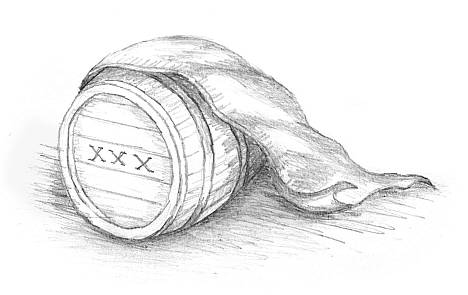 Tales have been
handed down of the villagers turning a deaf ear to noises at night, and next
morning finding their horses lathered and a keg of brandy in the porch. They
say the smugglers bound sacking round the wheels of the carts and over the
horses` hooves to dull the sound and to hide tracks and hoof prints. The goods
were often stored for a time on route. The smugglers went from Fish Street up
Head Street, Blind Lane or Wash Lane to Tiptree Heath which was said to be the "sorting
office".
Tales have been
handed down of the villagers turning a deaf ear to noises at night, and next
morning finding their horses lathered and a keg of brandy in the porch. They
say the smugglers bound sacking round the wheels of the carts and over the
horses` hooves to dull the sound and to hide tracks and hoof prints. The goods
were often stored for a time on route. The smugglers went from Fish Street up
Head Street, Blind Lane or Wash Lane to Tiptree Heath which was said to be the "sorting
office".
Smuggling probably progressively died out after the
coastguard station was set up the at Goldhanger in the 1820s, which also
coincided with the decline of local fishing trade. The coastguards remained in
the village for about 100 years. "The coast is
clear" was originally a smuggling term,
meaning "there are no coastguards about".
Early photographs show coastguards outside the inn wearing a distinctive
sailors type of uniform and hat. They were probably good customers of the inn. See also. . . Smuggling
at 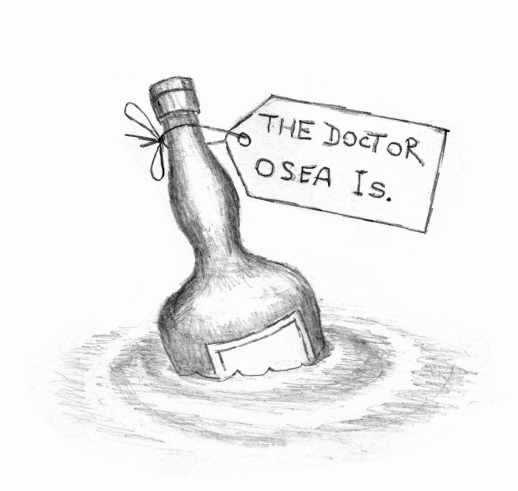 Goldhanger
Goldhanger
In the early 1900s, when Charrington`s used Osea Island as an isolated home and treatment
centre for alcoholic brewery employees and licensees, the flow of alcohol reversed
and liquor from the Chequers was taken across to the Osea Island "patients"
in a small boat. Bottles were tied to a navigation buoy close to the island to
be retrieved latter. Since then the buoy has been locally know as "the
doctors buoy".
THE GOLDHANGER FRIENDLY BROTHERS
with information kindly
supplied by the late Cecil Chaplin
The Goldhanger Friendly Brothers was originally an
early form of mutual sickness benefit, life assurance and a working mans club
and is unique to the village. It was originally associated with the earlier Wesleyan Chapel located near The Square and
has had other names over the 200 years, including The Friendly Society, Society
of Good Fellowship and The Good Intent. The early Society folded when a local
school teacher disappeared with the funds. It was reformed in 1903 and in 2003
the centenary of this was celebrated at the Chequers.
Although probably originally based in the Wesleyan
chapel, the Chequers has been their main venue for over 100 years. Dr Salter of
Tollesehunt D`arcy referred, in his well known diaries, to attending "the
Hand-in-Hand Club Fest" at Goldhanger in 1864, he was probably
referring to the Friendly Brothers, but this name has not been used elsewhere. Early
Friendly Brothers dinners at The Chequers, typically for 70 members, consisted
of beef or mutton roasted in the bakers oven over the road, with the vegetables
provided by the members. The dinners were suspended during the war years. Today
the Chequers continues to hosts the Friendly Brothers annual Christmas dinner,
which is still attended by 60-70 members.
The Friendly Brothers outside
The Chequers in 1910.
There is a Coastguard sitting
in the front row. The ladies were the landlord`s family and staff.
More about. . . The Goldhanger Friendly Brothers
BELLRINGING AND THE CHEQUERS
It is no surprise to find that the long association between St Peters Church and the Chequers extends to bell ringing next door. On hot days it can be thirsty work and there was a tradition in many towers to send the junior member of the band to the nearest pub with a large jug for beer or cider, which was passed around the ringers for refreshment. Many towers still have the jug, but in Goldhanger they probably just all walked next door. In the winter, and before electricity came to the village in 1937, the tower would have been extremely cold, and a quick trip to the bar to warm up by the fires would also have been, and still is, very welcome.
view of the bell tower and the War
Memorial from the main bar
 In the past the bellringers were farm
workers and labourers, and in the 1880s the Revd. Ellacombe a west country vicar,
became so disgusted with his unruly and probably drunken ringers that he
designed a mechanism to enable his trusted churchwarden to ring all the bells.
The mechanism became popular and known as Ellacombe
chimes. A set was fitted to St Peter`s bells in 1908 and is still
maintained in working order today.
In the past the bellringers were farm
workers and labourers, and in the 1880s the Revd. Ellacombe a west country vicar,
became so disgusted with his unruly and probably drunken ringers that he
designed a mechanism to enable his trusted churchwarden to ring all the bells.
The mechanism became popular and known as Ellacombe
chimes. A set was fitted to St Peter`s bells in 1908 and is still
maintained in working order today.
With eight bells, an additional benefit is that
simple tunes can be played, so don`t be surprised if your next meal in the
Chequers restaurant is accompanied by "You`ll Never
Walk Alone" or "Happy Birthday"
on the Church bells! At Christmas time carols are played on the chimes and in
the past the ringers played carols on hand bells in the hallway of the Chequers
in exchange for a pint, which was drunk from a large upturned hand bell.
Wednesday evening is practice night and not always the most tuneful time.
Beware of the rush for the bar at 9pm.
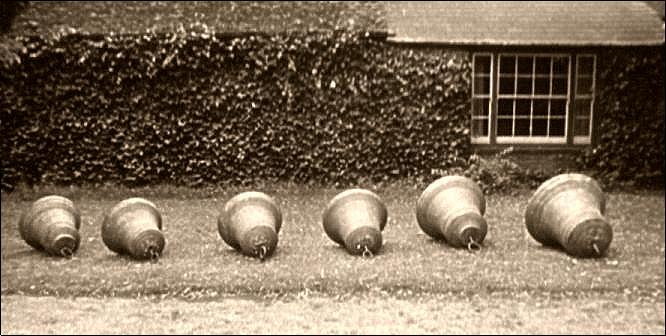
St Peter`s bells in the churchyard
near the Chequers window in 1952
when the belltower was being
refurbished. The bellringers were probably in the bar
here is
a page from... “Pub Walks in Essex”, by Norman Skinner
published in
1980
Two
things are of interest in this article: The pub sign is very unusual and it gives us
some very useful history...
|
The Chequers Inn started life in 1410 as a court house
wherein the unfortunates of the time were tried, executed in The Square and
buried in the adjacent churchyard. Being in the proximity of Blackwater the
odds are that a fair share of smugglers travelled this short but eventful
journey. Prince Nicolas of Russia, an altogether more
regarded person, had a somewhat happier time during his visit here. Inside some concessions have been made to the
present day — the tap room is now carpeted. The ceilings throughout are of oak
beam and an interesting collection of fishing rods and animal traps is to he
found around the public bar, which also has a large log fire crackling when
needed. A talkative parrot will amuse the children with which at times there
seems an affinity, and other pets are welcome. Saturday sees 'Live' Piano
night and monthly the venerable timbers rattle to the irreverent strains of
Jazz nights. To the rear is a beer garden. Car park. Examples of bar meals (available lunchtime and
evening, seven days): Cheese flan shepherds pie, beef and onion pie, lasagne,
ploughman, sandwiches, basket meals, salads. Examples of restaurant meals
(available evenings only in summer, seven days. In winter, evenings, plus
lunchtime by reservation): Dressed crab, grilled skate, steak and prawn
platter, chicken breast stuffed with shrimp and lobster, mixed grill. Trevor
and Joan Jones have asked us to pass on their warmest welcome and ensured
endeavours to readers. |
the photograph in this article shows a very unusual pub sign, a close-up
of the sign is here
it also shows a traditional Truman’s
lantern over the front door
and here
is Trevor & Joan with
their parrot and Scooby-Doo
TALES FROM THE TAP ROOM
![]() Smugglers
tunnels, locals have
frequently spent time in the bars speculating where the two tunnels that were
said to be under the Chequers were located. To be useful and effective for
smuggling they would need to emerge somewhere on the ground floor behind the
main bar and close to the cellar (today located near the road and above
ground), but where were these tunnels? See People, Events
& Smuggling above.
Smugglers
tunnels, locals have
frequently spent time in the bars speculating where the two tunnels that were
said to be under the Chequers were located. To be useful and effective for
smuggling they would need to emerge somewhere on the ground floor behind the
main bar and close to the cellar (today located near the road and above
ground), but where were these tunnels? See People, Events
& Smuggling above.
![]() Prince
Nicholas, later to be Tsar
Nicholas II of Russia had lunch and/or stayed at The Chequers in the late 1800s
or early 1900s while visiting the famous Dr Salter of
Tolleshunt D`arcy. Dr Salter was known to be fluent in the Russian language,
travelled often to Russia to judge dog shows as president of the Kennel Club,
and met members of the Russian royal family on many occasions. It is thought
the Prince joined Dr Salter for a duck shoot on Osea Island and Tollesbury
Marshes after visiting Queen Victoria. A previous visitors book at the Chequers
had the Prince`s signature in it.
Prince
Nicholas, later to be Tsar
Nicholas II of Russia had lunch and/or stayed at The Chequers in the late 1800s
or early 1900s while visiting the famous Dr Salter of
Tolleshunt D`arcy. Dr Salter was known to be fluent in the Russian language,
travelled often to Russia to judge dog shows as president of the Kennel Club,
and met members of the Russian royal family on many occasions. It is thought
the Prince joined Dr Salter for a duck shoot on Osea Island and Tollesbury
Marshes after visiting Queen Victoria. A previous visitors book at the Chequers
had the Prince`s signature in it.
![]() During
the Great War
there
was an aerodrome, or "Flight
Station", at the edge of the village on the
Maldon Road and the pilots of the tiny bi-planes regularly frequented The
Chequers. In March 1918, 20 aircraft of 74 Squadron landed at Goldhanger on
route to the front at Ypres. The Flight commander was Captain Mick Mannock,
later to be promoted to major. Despite being blind in one eye he officially
shot down 73 enemy planes, unofficially he shot down nearer 100.
During
the Great War
there
was an aerodrome, or "Flight
Station", at the edge of the village on the
Maldon Road and the pilots of the tiny bi-planes regularly frequented The
Chequers. In March 1918, 20 aircraft of 74 Squadron landed at Goldhanger on
route to the front at Ypres. The Flight commander was Captain Mick Mannock,
later to be promoted to major. Despite being blind in one eye he officially
shot down 73 enemy planes, unofficially he shot down nearer 100.
Mannock wrote in his diary of a farewell drink at
the Chequers pub before departing for Ypres. The landlord, Henry Hind, made the
pilots extremely welcome, but not so welcoming was the village "big
shot", who objected to the singing in the
bar. Mannock offered him the choice of a drink or be thrown out! The "arm
of the law", said to be none other than the well know
local GP, Dr Henry Salter, who was captain of the local volunteer force, chose
the drink and joined in the merriments. "The departure of
the airmen the next day was marked by a few hangovers".
Mannock was later shot down and was awarded the VC posthumously. This is a
summary of an article written by Stephen Nunn entitled "When Goldhanger played Host to Knights of the Air" and published in 1990.
![]() On bonfire nights
in the
early 1900s, prior to the tarmacing of the roads, an annual ritual took place
when a large November 5th bonfire was lit in The Square by the village youths.
As excitement rose the youths would roam the village in search of wooden
objects to fuel the fire; farm gates would be chained and locked for the night.
On one occasion, the heat was so intense that it cracked some of the Chequers
front windows. There is a newspaper report from November 1910 of a court case
when four Goldhanger “labourers” were prosecuted for putting an empty beehive
on a fire in The Square on bonfire night. One of the defendants said in court
that Goldhanger had celebrated Guy Fawkes night with a bonfire in The Square
for 50 years.
On bonfire nights
in the
early 1900s, prior to the tarmacing of the roads, an annual ritual took place
when a large November 5th bonfire was lit in The Square by the village youths.
As excitement rose the youths would roam the village in search of wooden
objects to fuel the fire; farm gates would be chained and locked for the night.
On one occasion, the heat was so intense that it cracked some of the Chequers
front windows. There is a newspaper report from November 1910 of a court case
when four Goldhanger “labourers” were prosecuted for putting an empty beehive
on a fire in The Square on bonfire night. One of the defendants said in court
that Goldhanger had celebrated Guy Fawkes night with a bonfire in The Square
for 50 years.
There is another newspaper report from November 1921
when a Jack Johnson, labourer from Goldhanger was prosecuted for a similar
offence. He said “there has always been a bonfire there on Guy Fawkes night”.
The prosecutor said “The flames shot up 20 feet and houses were only yards
away”. The defendant was fined 4 shillings and Dr Salter the chairman of the
bench said “I daresay other will subscribe to the 4 shillings”. At this time
Guy Fawkes night celebrations were frequently merges with local Armistice day celebrations, as the dates for the two
events were just six day apart, and Jack Johnson was most probably the brother
of one of those Goldhanger men killed in the Great War.
We now know that the last time a bonfire was lit in
The Square was for the VE-Day celebrations at the
end of WW-2...
artist's impression of
Bonfire night in The Square
select
to enlarge and listen to the fireworks
![]() For a short time around 1925 Charles Mann
became the Landlord. He shared this role with the many other activities for
which he was well known: wheelwright, blacksmith, undertaker, Bell tower
captain, Chairman of Parish Council, School manager, and last but not least he
was a member of the group of Goldhanger men who travelled to Spitzbergen, at the beginning of the 20th
century to prospect for gold.
For a short time around 1925 Charles Mann
became the Landlord. He shared this role with the many other activities for
which he was well known: wheelwright, blacksmith, undertaker, Bell tower
captain, Chairman of Parish Council, School manager, and last but not least he
was a member of the group of Goldhanger men who travelled to Spitzbergen, at the beginning of the 20th
century to prospect for gold.
![]() One of the longest serving landlords was Jack Spitty, who was in residence from 1926 to 1953. He was
a well known barge skipper and the Sailing Barge Association still awards the
Spitty Trophy. He often said his forebears were "Essex pirates
and smugglers" and was so involved with barges that he
named all his three children after barges.
One of the longest serving landlords was Jack Spitty, who was in residence from 1926 to 1953. He was
a well known barge skipper and the Sailing Barge Association still awards the
Spitty Trophy. He often said his forebears were "Essex pirates
and smugglers" and was so involved with barges that he
named all his three children after barges.
![]() Roast lamb on Fridays - in 1929 a
postcard with a view of the Chequers on the front was sent from Goldhanger to
London with this message on the back: "The local farmers enjoy a roast
lamb meal here every Friday". About 18 different postcards with scenes of the Chequers and The Square
were know to have been produced between 1900 and 1950. Many were posted back
home by people staying in or near the village who were here combining strawberry,
pea or apple picking with a holiday.
Roast lamb on Fridays - in 1929 a
postcard with a view of the Chequers on the front was sent from Goldhanger to
London with this message on the back: "The local farmers enjoy a roast
lamb meal here every Friday". About 18 different postcards with scenes of the Chequers and The Square
were know to have been produced between 1900 and 1950. Many were posted back
home by people staying in or near the village who were here combining strawberry,
pea or apple picking with a holiday.
![]() During World War 2 the local Ancillary Fire Service team`s
equipment was stored in the Old Rectory farm
buildings and the Air Raid Post "control room"
was in what is now the Chequers kitchen, complete with one of the few
telephones in the village.
During World War 2 the local Ancillary Fire Service team`s
equipment was stored in the Old Rectory farm
buildings and the Air Raid Post "control room"
was in what is now the Chequers kitchen, complete with one of the few
telephones in the village.

the local AFS team in the Old Rectory farmyard
![]() Cap on St Peters flagpole in the early 1930s two young men,
Ned Rowley (shop keeper and later Postmaster in The Square) and Bob
Norton (a bricklayer at the time who later served in the Navy in WW-2), were known for getting up to all sorts of
pranks, and after an evening in the Chequers and being a bit worse for wear a
group of lads bet them they couldn't put a cap on the top of St
Peters flagpole, but they proved them wrong. The next morning, Bob couldn't
find his cap and on his way to the Sunday Church service he noticed a cap on
the Church flagpole. Ned then told him of his Saturday night adventure, but Bob
had no memory of climbing the pole. He later said getting his hat back when
sober was a bit scary!
Cap on St Peters flagpole in the early 1930s two young men,
Ned Rowley (shop keeper and later Postmaster in The Square) and Bob
Norton (a bricklayer at the time who later served in the Navy in WW-2), were known for getting up to all sorts of
pranks, and after an evening in the Chequers and being a bit worse for wear a
group of lads bet them they couldn't put a cap on the top of St
Peters flagpole, but they proved them wrong. The next morning, Bob couldn't
find his cap and on his way to the Sunday Church service he noticed a cap on
the Church flagpole. Ned then told him of his Saturday night adventure, but Bob
had no memory of climbing the pole. He later said getting his hat back when
sober was a bit scary!
![]() During World War 2 a member of the Goldhanger Home guard was stripping
down his sten gun in the tap room of the Chequers. There was no ammunition in
the gun as he took it apart however he did not carefully retain the butt end of
the gun, and a spring shot out across the bar and smashed the glass in the
pub’s clock.
During World War 2 a member of the Goldhanger Home guard was stripping
down his sten gun in the tap room of the Chequers. There was no ammunition in
the gun as he took it apart however he did not carefully retain the butt end of
the gun, and a spring shot out across the bar and smashed the glass in the
pub’s clock.
![]() USA G.I.s travelling from
their base at Messing airfield were regular visitors to The Chequers during
the second World War. Jeeps would be regularly seen parked along the Church
wall on a Saturday evening. They came to know the Chequers through visits to
the village as observers of bomb target practice in the estuary. (See the WW-2 page with a photo)
USA G.I.s travelling from
their base at Messing airfield were regular visitors to The Chequers during
the second World War. Jeeps would be regularly seen parked along the Church
wall on a Saturday evening. They came to know the Chequers through visits to
the village as observers of bomb target practice in the estuary. (See the WW-2 page with a photo)
![]() Just after
World War 2 some redundant military aircraft seats were
acquired and were used for many years as seating in the tap bar.
Just after
World War 2 some redundant military aircraft seats were
acquired and were used for many years as seating in the tap bar.
![]() In the 1960s the landlord and
his wife became convinced that the Chequers was haunted after they repeatedly
heard the sound of a crying baby at night, but never found one. Barmen have
also heard the crying.
In the 1960s the landlord and
his wife became convinced that the Chequers was haunted after they repeatedly
heard the sound of a crying baby at night, but never found one. Barmen have
also heard the crying.
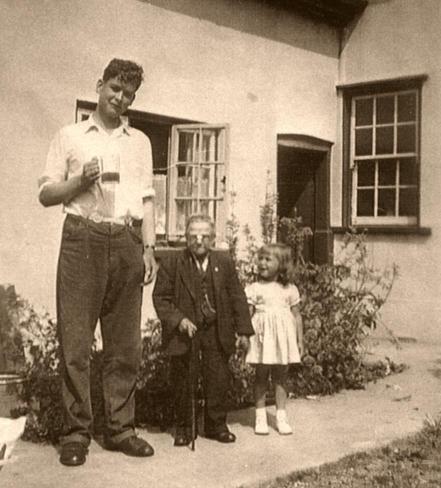
![]() Lou Spooner,
who was just 3ft 7inches tall, and lived in Fish Street, was a regular in the
tap room when not travelling with a circus. At the weekends he frequently
entertained other customers by tap-dancing on a table, accompanied by his
brother on a piano-accordion.
Lou Spooner,
who was just 3ft 7inches tall, and lived in Fish Street, was a regular in the
tap room when not travelling with a circus. At the weekends he frequently
entertained other customers by tap-dancing on a table, accompanied by his
brother on a piano-accordion.
Here he is in the Chequers yard in later
life...
![]() During the 1960s a
television advertisement was believed to have been made using the main bar of the
inn. A customer is seen sitting in the window with a pint but looking rather
irritated, with the church bells ring in the background. The camera pans around
and the bar and the bells stop. When the camera returns to the man he seems
much happier. The camera pans down to his feet and under the table there is a
clapper from one of the bells.
During the 1960s a
television advertisement was believed to have been made using the main bar of the
inn. A customer is seen sitting in the window with a pint but looking rather
irritated, with the church bells ring in the background. The camera pans around
and the bar and the bells stop. When the camera returns to the man he seems
much happier. The camera pans down to his feet and under the table there is a
clapper from one of the bells.
![]() Bellringer's Door A former
resident, who spent his youth in the village, remembers there being a door from
the bar that went directly into the churchyard. Customers were told that this
door was for use of the bellringers only! Great story, but sadly there is no
evidence of there once being a door in the old red brickwork on the outside of
the building that forms the boundary to the churchyard. The story is perhaps
supported by the wooden panelling on the north wall that can be seen in the
churchyard. However, renovation work in 2015 revealed that the panel simply
covered an old extractor fan orifice and the associated staining on the
brickwork....
Bellringer's Door A former
resident, who spent his youth in the village, remembers there being a door from
the bar that went directly into the churchyard. Customers were told that this
door was for use of the bellringers only! Great story, but sadly there is no
evidence of there once being a door in the old red brickwork on the outside of
the building that forms the boundary to the churchyard. The story is perhaps
supported by the wooden panelling on the north wall that can be seen in the
churchyard. However, renovation work in 2015 revealed that the panel simply
covered an old extractor fan orifice and the associated staining on the
brickwork....
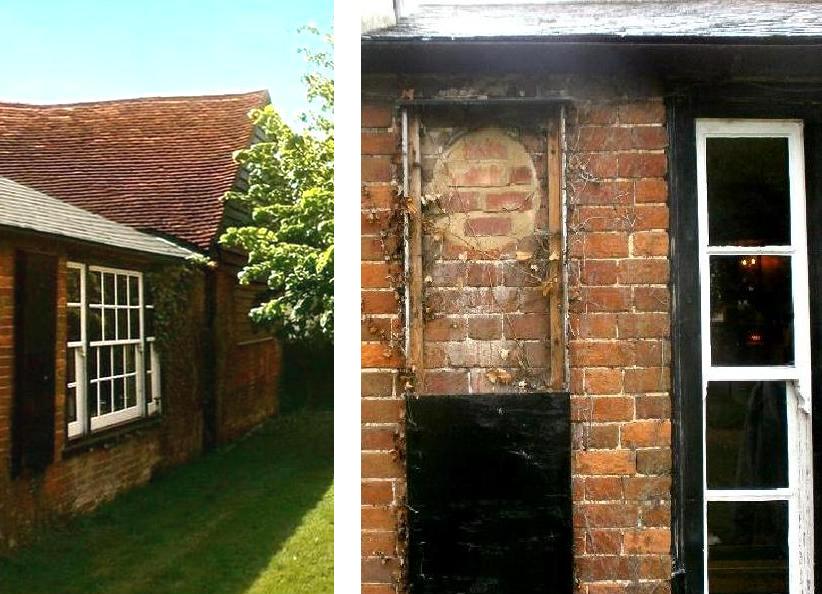
![]() In the late 1960 & early 70s
when Dutch Elm decease was rife and logs were plentiful, the landlord "opened
up" the fire place in the tap room by
removing a red brick insert, similar to those still in the other bars and in
the winter roaring open fires kept the tap room extremely warm. Inevitably, the
chimney caught fire and the fire brigade had to be called to put out the fire.
The landlord was strongly advised by the brigade not to have such large open
fires again to protect the building and its customers.
In the late 1960 & early 70s
when Dutch Elm decease was rife and logs were plentiful, the landlord "opened
up" the fire place in the tap room by
removing a red brick insert, similar to those still in the other bars and in
the winter roaring open fires kept the tap room extremely warm. Inevitably, the
chimney caught fire and the fire brigade had to be called to put out the fire.
The landlord was strongly advised by the brigade not to have such large open
fires again to protect the building and its customers.
![]() The landlord later however, acquired
the reputation of being mean with fuel, and on one bitterly cold day, when the
fire was clearly inadequate, the landlord left the premises for a short time,
only to return to discover that customers had chopped up two chairs and had
added them to the fire for more heat. In more recent years has always been a
good log burner fire going in the front bar on winter days...
The landlord later however, acquired
the reputation of being mean with fuel, and on one bitterly cold day, when the
fire was clearly inadequate, the landlord left the premises for a short time,
only to return to discover that customers had chopped up two chairs and had
added them to the fire for more heat. In more recent years has always been a
good log burner fire going in the front bar on winter days...
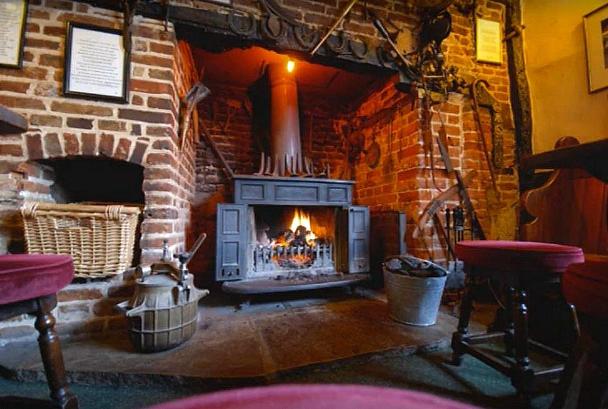
![]() In the early 1970s when re-paving
work was being undertaken in the back yard, the landlord announced that some
brick foundations had been uncovered that could possibly be of Roman origin.
The work was suspended and archaeologists were invited to inspect the find. In
the meantime, word of the find quickly spread around the village and everyone
went to look into the hole in the yard. However, the experts declared the
brickwork was part of a Victorian urinal.
In the early 1970s when re-paving
work was being undertaken in the back yard, the landlord announced that some
brick foundations had been uncovered that could possibly be of Roman origin.
The work was suspended and archaeologists were invited to inspect the find. In
the meantime, word of the find quickly spread around the village and everyone
went to look into the hole in the yard. However, the experts declared the
brickwork was part of a Victorian urinal.
![]() In the 1970`s the local baker
delivered bread to the outlying villages. Once a week at the end of his
delivery day he would call at the Chequers where the landlord of the day would
purchase his last few loaves. The delivery to the pub was always the same. When
the baker arrived outside the pub the landlord, hearing the baker`s van, would
slip the bolt on the front door allowing the baker entry, and he return to his
lounge (which is now the pool room) to watch the television news programme. The
baker would walk into the bar, leave the bread on the counter, draw himself a
pint and then record the final transaction of the day in his round book.
In the 1970`s the local baker
delivered bread to the outlying villages. Once a week at the end of his
delivery day he would call at the Chequers where the landlord of the day would
purchase his last few loaves. The delivery to the pub was always the same. When
the baker arrived outside the pub the landlord, hearing the baker`s van, would
slip the bolt on the front door allowing the baker entry, and he return to his
lounge (which is now the pool room) to watch the television news programme. The
baker would walk into the bar, leave the bread on the counter, draw himself a
pint and then record the final transaction of the day in his round book.
One November evening in 1973 the usual ritual took
place. But on this occasion the baker, standing at the hatchway with his pint,
looked across into the saloon bar and noticed a tall man sitting near the
fireplace, a glass of beer was on the table in front of him. The baker,
unconcerned, carried on with his bookwork. The man got up from his seat to
leave the pub, and the baker noticed he had long grey hair and wore a grey
trench coat that flapped against him as he passed. This prompted the baker to
say `Good Evening`, but the stranger did not answer. When eventually the landlord
came into the bar to settle his bill the baker asked him who the stranger was
and recounted what had happened; `well` said the landlord `you are definitely
the first customer I have seen this evening`. Pale and shaking the baker
pointed to the empty beer mug on the saloon bar table and hurriedly left for
home.
![]() A Stranger known only as Graham chatted to the locals in one of the in bars the
early 1970s. He was young, fair haired and didn’t say a lot or
reveal much about himself. However, what he did say has not been forgotten by
the regulars. He said he was staying in a cottage on Lauristons Farm, a couple
of miles east of the village overlooking the Blackwater Estuary. He also
revealed he was a pianist by profession performing mainly in London, but he had
also performed at Snape Maltings. There he had worked with Benjamin Britten and
Peter Pears and knew them both well.
A Stranger known only as Graham chatted to the locals in one of the in bars the
early 1970s. He was young, fair haired and didn’t say a lot or
reveal much about himself. However, what he did say has not been forgotten by
the regulars. He said he was staying in a cottage on Lauristons Farm, a couple
of miles east of the village overlooking the Blackwater Estuary. He also
revealed he was a pianist by profession performing mainly in London, but he had
also performed at Snape Maltings. There he had worked with Benjamin Britten and
Peter Pears and knew them both well.
With the passage of time, it is believed that this man was, and is,
Graham Johnson, who today is a well known pianist with an established
reputation as the accompanist to many famous soloists...

with Benjamin
Britten at the piano with Peter Pears in the
1980s today
There is perhaps another connection with Goldhanger: Graham Johnson is today known for playing and
recording the music of Ralph Vaughan Williams, and Vaughan Williams was a close
friend of Sir Gilmour Jenkins, who was an accomplished baritone living at
Goldhanger Houses in that same period and whose daughter was married a local
farmer. Just a little too much of a coincidence? Today (2022) Graham is Senior Professor of
Accompaniment at the Guildhall School of Music and Drama.
![]() The pub had a
long-standing sociable tradition of "sipping",
that is while waiting for your beer at busy times when the landlord had to go
to the "cellar" to pour it,
locals would offer a sip from their glasses. When the new pint arrived it was
polite to return the gesture.
The pub had a
long-standing sociable tradition of "sipping",
that is while waiting for your beer at busy times when the landlord had to go
to the "cellar" to pour it,
locals would offer a sip from their glasses. When the new pint arrived it was
polite to return the gesture.
![]() The landlord and landlady of
the Chequers in the 1980`s had an Arabian friend who often came to stay with
them at the pub for several weeks at a time. Although a Saudi Arabian, he was
very partial to a gin and tonic. During an early visit he had accepted several
drinks from fellow patrons over the course of an evening and after being made
aware that it was the custom in the UK to buy those you were drinking with a
reciprocal drink he felt he had offended his companions. For the rest of his
stay, and many visits afterwards, he would purchase his evening gin and tonic
and a drink for everyone else in the pub.
The landlord and landlady of
the Chequers in the 1980`s had an Arabian friend who often came to stay with
them at the pub for several weeks at a time. Although a Saudi Arabian, he was
very partial to a gin and tonic. During an early visit he had accepted several
drinks from fellow patrons over the course of an evening and after being made
aware that it was the custom in the UK to buy those you were drinking with a
reciprocal drink he felt he had offended his companions. For the rest of his
stay, and many visits afterwards, he would purchase his evening gin and tonic
and a drink for everyone else in the pub.
![]() In the 1970s and 80s Sunday night
jazz nights became extremely popular and bands from all over southern England
performed. However, it became so crowded that it was very difficult to reach
the bar and the landlord cancelled the events due to a lack of takings. See the
clips of the jazz evening in the 1980s BBC TV programme about Osea Island on
YouTube and the links to it below.
In the 1970s and 80s Sunday night
jazz nights became extremely popular and bands from all over southern England
performed. However, it became so crowded that it was very difficult to reach
the bar and the landlord cancelled the events due to a lack of takings. See the
clips of the jazz evening in the 1980s BBC TV programme about Osea Island on
YouTube and the links to it below.
![]() Mary Rose, in 2007 former
landlady Mary Hulbert, wrote her memoirs of her and her husband landlord Jack`s
time at the Chequers in the 70s and 80s. The book is entitled "The Licence". The
cover photo belies that it is all about their time at the Chequers. It describes
their involvement with the jazz evenings and as their son worked on Osea Island a chapter of the book describes the
family`s involvement with the island and its residents at the time the BBC
television programme was made.
Short extracts from the book are available here...
Mary Rose, in 2007 former
landlady Mary Hulbert, wrote her memoirs of her and her husband landlord Jack`s
time at the Chequers in the 70s and 80s. The book is entitled "The Licence". The
cover photo belies that it is all about their time at the Chequers. It describes
their involvement with the jazz evenings and as their son worked on Osea Island a chapter of the book describes the
family`s involvement with the island and its residents at the time the BBC
television programme was made.
Short extracts from the book are available here...
![]() During the early 1980s a BBC television
crew spend a day filming at the Chequers and interviewing locals in the Tap
Room about their memories of working on Osea Island.
The programme, called Causeway`s End, was made by BBC producer Andrew Goslin who
lived on the Island then and was broadcast on BBC television at the time. It is
still a pleasure to watch and described the Carrington’s retreat on the island
for "inebriates" just before
World War 1, it showed scenes from HMS Osea as
the navy called it during the war, and more recent scenes of the island,
including horses at work, barges, vehicles on the causeway, etc. It also
described, however, how Goldhanger residents in the past supported activities on
the island and how, over the years, the island`s residents have used the
Chequers as their mainland base...
During the early 1980s a BBC television
crew spend a day filming at the Chequers and interviewing locals in the Tap
Room about their memories of working on Osea Island.
The programme, called Causeway`s End, was made by BBC producer Andrew Goslin who
lived on the Island then and was broadcast on BBC television at the time. It is
still a pleasure to watch and described the Carrington’s retreat on the island
for "inebriates" just before
World War 1, it showed scenes from HMS Osea as
the navy called it during the war, and more recent scenes of the island,
including horses at work, barges, vehicles on the causeway, etc. It also
described, however, how Goldhanger residents in the past supported activities on
the island and how, over the years, the island`s residents have used the
Chequers as their mainland base...
a saved version of the original programme is on YouTube here
clips showing the Chequers scenes are at: 0.30 - 1.18 7.29 - 7.58 &
8.40 - 9.35
![]() In 2016 part of a
feature film entitled "The Hatton Garden Heist" was recored in the
bar of The Chequers. Local actor Michael McKell was one of the main actors in
the film and is seated in the middle of this photo...
In 2016 part of a
feature film entitled "The Hatton Garden Heist" was recored in the
bar of The Chequers. Local actor Michael McKell was one of the main actors in
the film and is seated in the middle of this photo...
SHORT WALKS FROM THE CHEQUERS
37 SQUADRON of the ROYAL FLYING CORP
part
of an article written by Bill Meehan in the 2003
St Peter`s Church is a imposing building
with 11th Century origins and a 15th Century tower. The tower can be seen from
a long way out in the wide Blackwater River and has served as a useful navigation
mark for hundreds of years. A public footpath starts at a kissing gate, into
the churchyard and thence through two rows of yew trees to an unusual little
stile in the far churchyard wall. Near here you will find two Commonwealth War
Grave headstones, where Second Lieutenants Sydney Armstrong and Frederick
Crowley are buried. Both lost their lives over Goldhanger in WW-1.
Spare a thought and perhaps a smile and
a cheery wave, for the two pilots as you walk through. The footpath leads on to
a delightful walk around fields to the seawall, back via the playing field at
the bottom of Fish Street and thence to your starting point at the church -
twenty minutes if you step out, forty if you dawdle. If you go in summer you`ll
see larks rising, hovering and falling. In October to March, with luck, you`ll
see the Brent Geese who come here from Siberia to spend the winter every year.
You may see them feeding at the water`s edge as the tide recedes or flying in
formation overhead.
The view you will have across the Blackwater to Osea
island will be as it was when the pilots of C Flight, 37 Squadron, saw it when
on patrol in 1916-18. When you have completed your walk and arrived back at the
church, you will find the Chequers Inn next door, should you need sustenance. See...
The Great War - Flight Station
GOLDHANGER DOGGEREL
A poem by Bill Meehan
|
My favourite approach to the wobbly plank is down to the playground and up to the bank, along the sea wall past an old barge, quite rotten, dumped there in the forties, forlorn and forgotten. Look out for the mooring posts near the sea wall. They`re stout, blackened timber, standing there tall, for you to moor up, coming in on the tide, and when it goes out, just climb over the side. You can walk ashore here, high and dry on the shingle and make your way up to The Chequers to mingle with old salty dogs, bewhiskered and tanned puffing their pipes with their pints in their hand. This pub is next door to the Church of St Peter. An arrangement like that could hardly be neater for answering the needs of a dry congregation in search of relief and some mild celebration. This is the last verse and I`ve not mentioned geese or dunlins and skylarks, summer evenings and peace. But shush. Keep it quiet, for I`m sure you`ll agree Goldhanger`s secrets are for just you and me. |
The Chequers has always been a popular subject for artists, here
is a selection of that artwork from the archives...
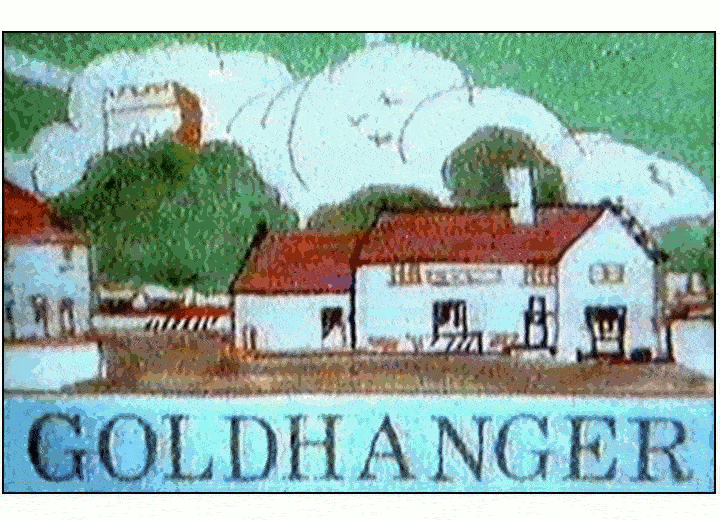
PAST CHEQUERS LANDLORDS
|
||||
Year
|
Publicans
|
Source
|
||
|
1769 |
Edward Smith |
Essex
Records Office |
||
|
1820-38 |
John Cooper |
Tithe
Awards, Chelmsford Chronicle |
||
|
1839-40 |
George Cowell |
Pigot`s
commercial directory |
||
|
1841-48 |
John Cooper |
Census,
White`s Directory |
||
|
1851-55 |
James & Caroline Bitten |
Census,
Kelly`s Directory |
||
|
1860-61 |
William & Esther Good |
Census |
||
|
1862-69 |
William Good |
Post
Office, Chelmsford Chronicle |
||
|
1870-74 |
William Russell |
Kelly`s
Directory, Post Office |
||
|
1878-95 |
William Joseph & Eliza Harvey |
Kelly`s,
Chelmsford Chronicle |
||
|
1898-99 |
James McDonald |
Kelly`s
Directory |
||
|
1901-02 |
Sidney & Elizabeth Haskins |
Kelly`s,
Census |
||
|
1904-14 |
Frank Norton |
Friendly
Brothers plaque in pub |
||
|
1914-17 |
Harry Hills |
" |
||
|
1917-18 |
Henry Hinds |
" |
||
|
1918-25 |
Robert Westbrook |
" |
||
|
1925-26 |
" |
|||
|
1926-53 |
" |
|||
|
1953-61 |
K.Embley |
" |
||
|
1961-66 |
F,.Howard |
" |
||
|
1966-73 |
Peter Wardlord |
" |
||
|
1974-84 |
see
extracts from Mary’s book |
|||
|
1984-02 |
Friendly
Brothers plaque in pub |
|||
|
2002-19 |
Phil Glover & Dom Davies |
|||
|
2019 to-date |
Dom |
|||
|
Some of this information was taken from: pubshistory.com/EssexPubs/Goldhanger/chequers |
||||
ACKNOWLEDGEMENTS
Some of the material
included here originates from:
the unpublished letter by
Arthur Appleton in 1918 - with the kind permission of his descendants
Goldhanger - an Estuary Village by Maura
Benham, published in 1977
The Goldhanger Stone: What Is It?
by Miller Christy, in Transactions of the Essex
Archaeological Society, 1909
When Goldhanger played Host - written by Stephen Nunn,
published in The Journal (M), 1990
an unpublished manuscript Study of The Chequers Inn
architecture written by Janet White in the
1990s
there is now a machine readable
and searchable text version available
The Goldhanger History Group
wish to thank the landlords of The Chequers for permission to take the recent
photographs
and also thank the many
Chequers customers who provided much of the information and “Tales from the Tap
Room”
the Chequers current website
is at... https://www.thechequersgoldhanger.co.uk
their Facebook page is at... https://www.facebook.com/ChequersinnGoldhanger
with many photos at... https://www.facebook.com/ChequersinnGoldhanger/photos
© - The Goldhanger
Digital Archive 2024
